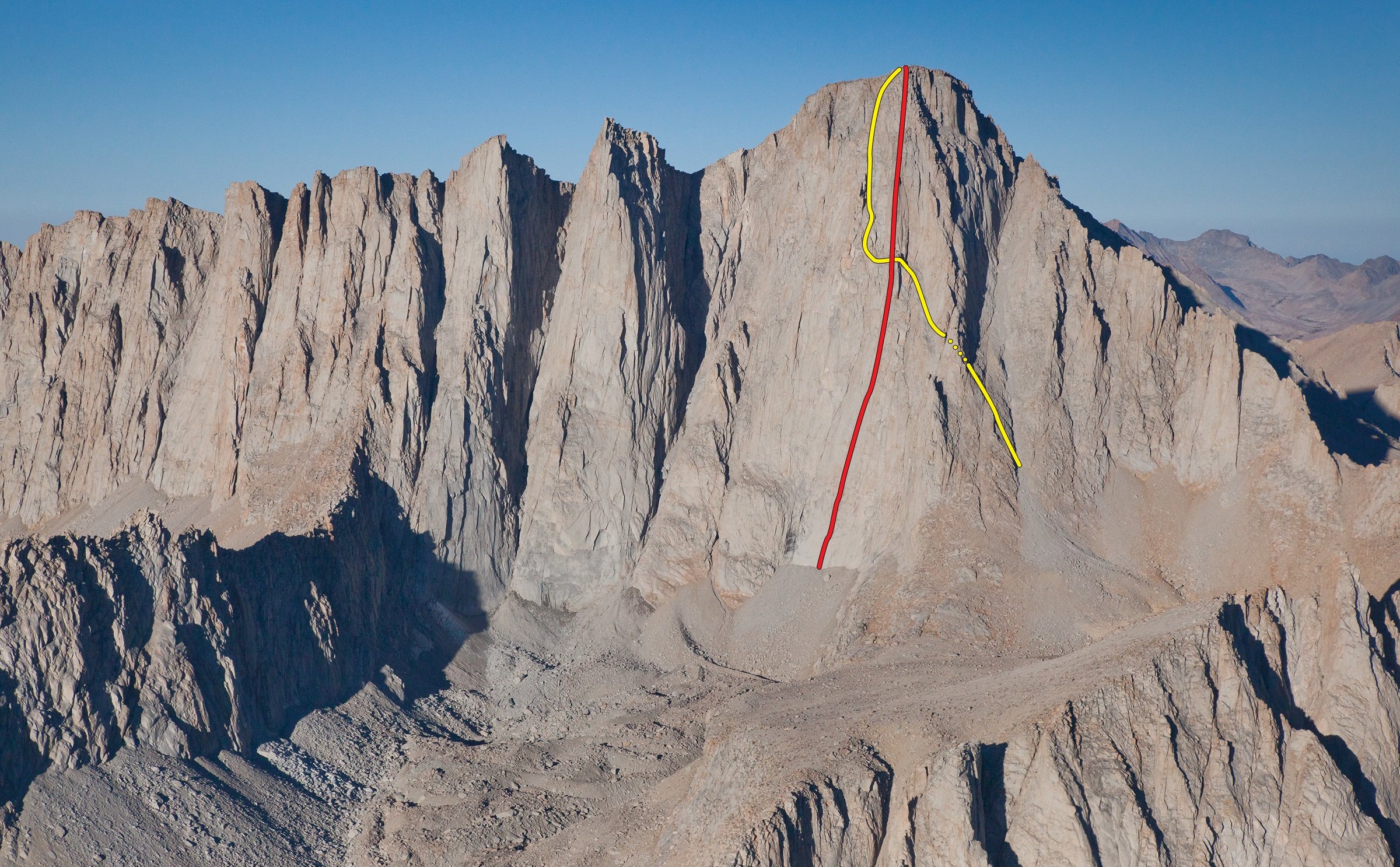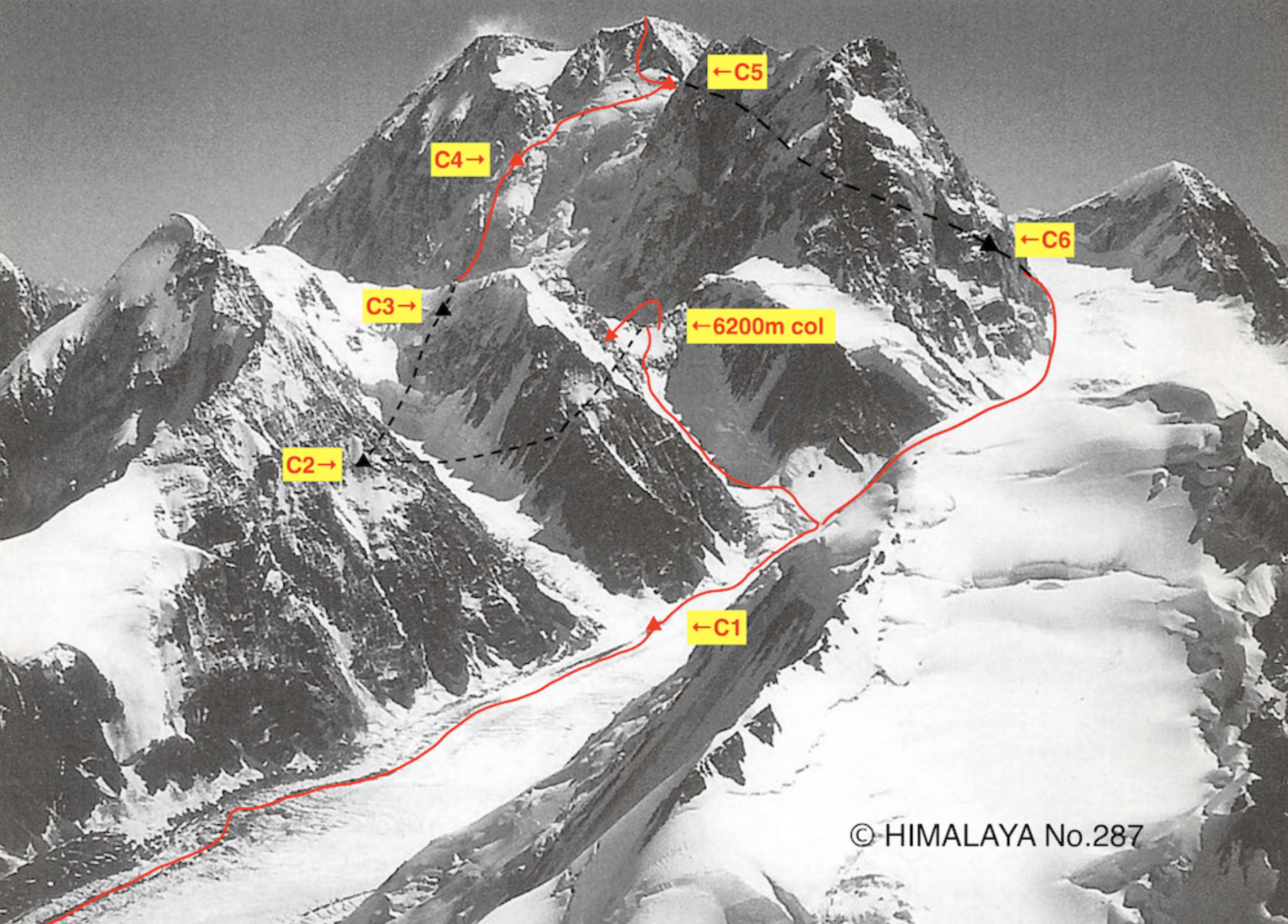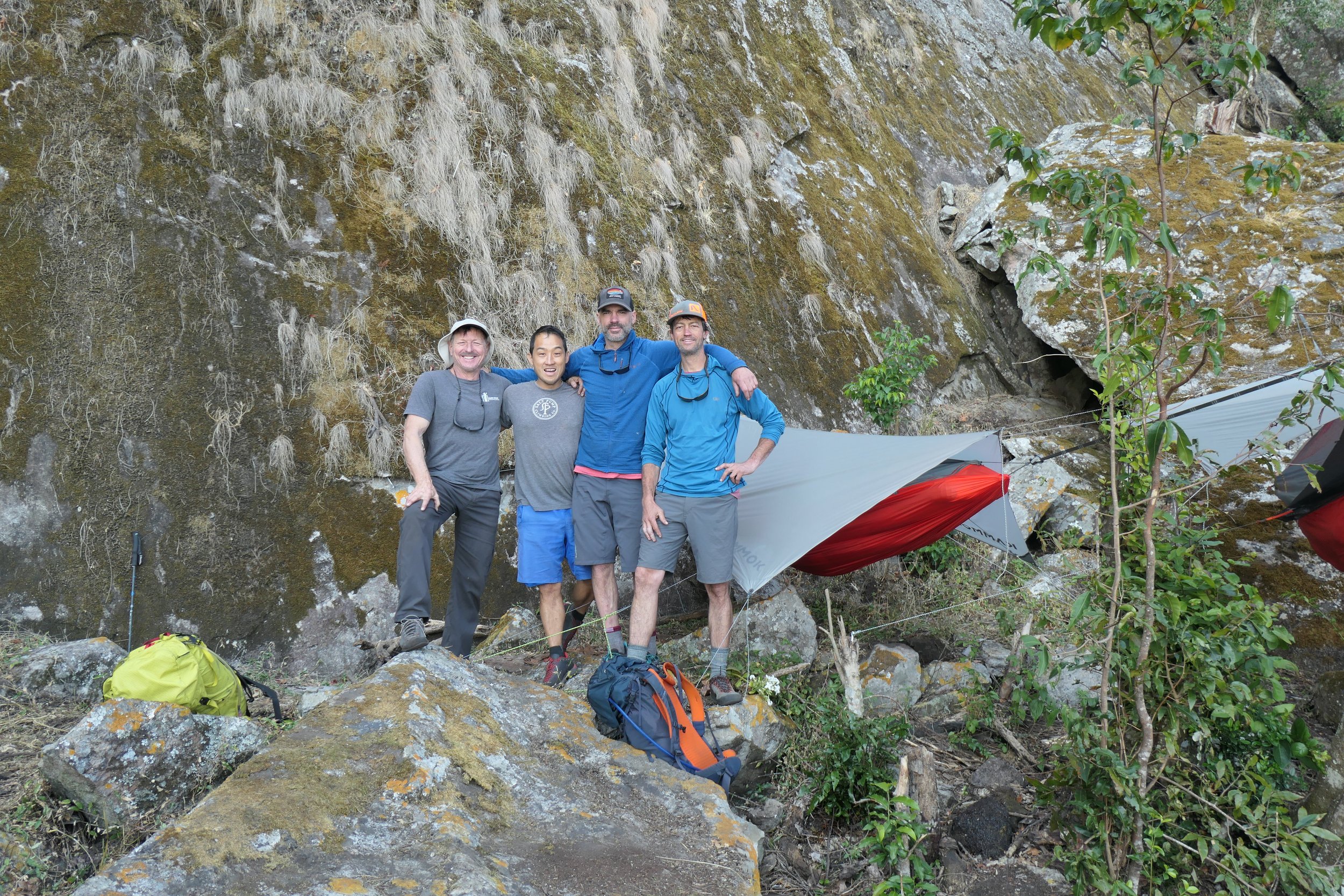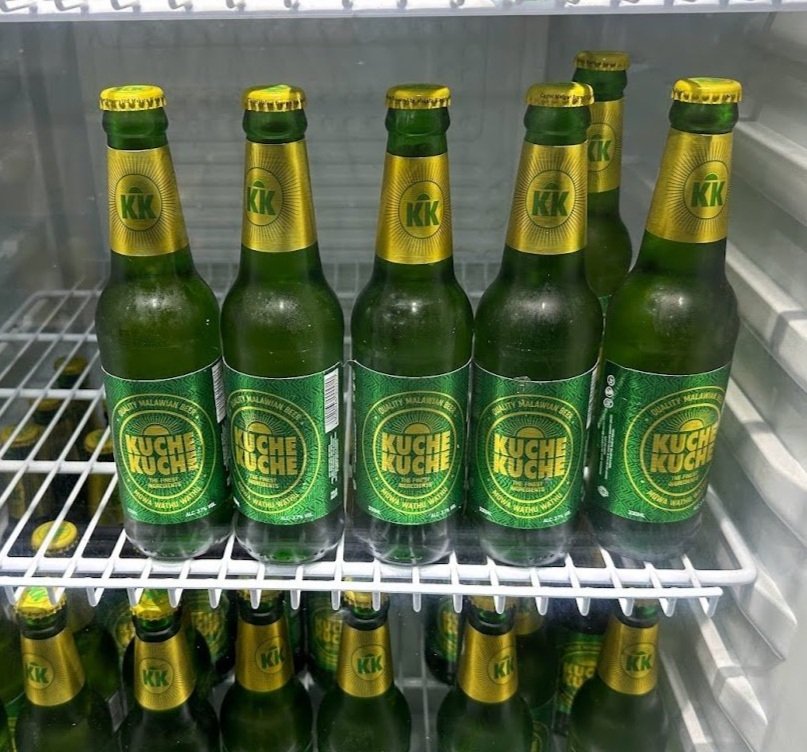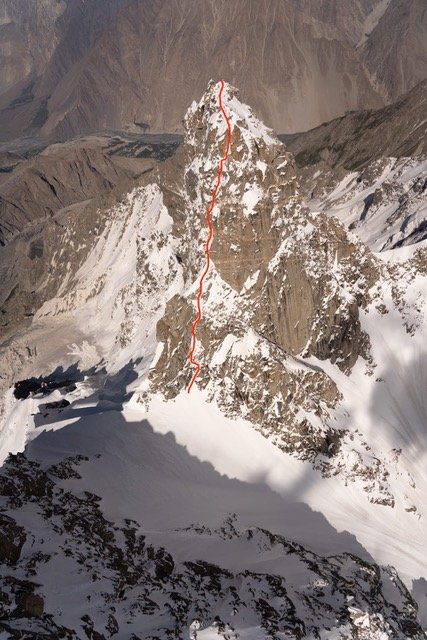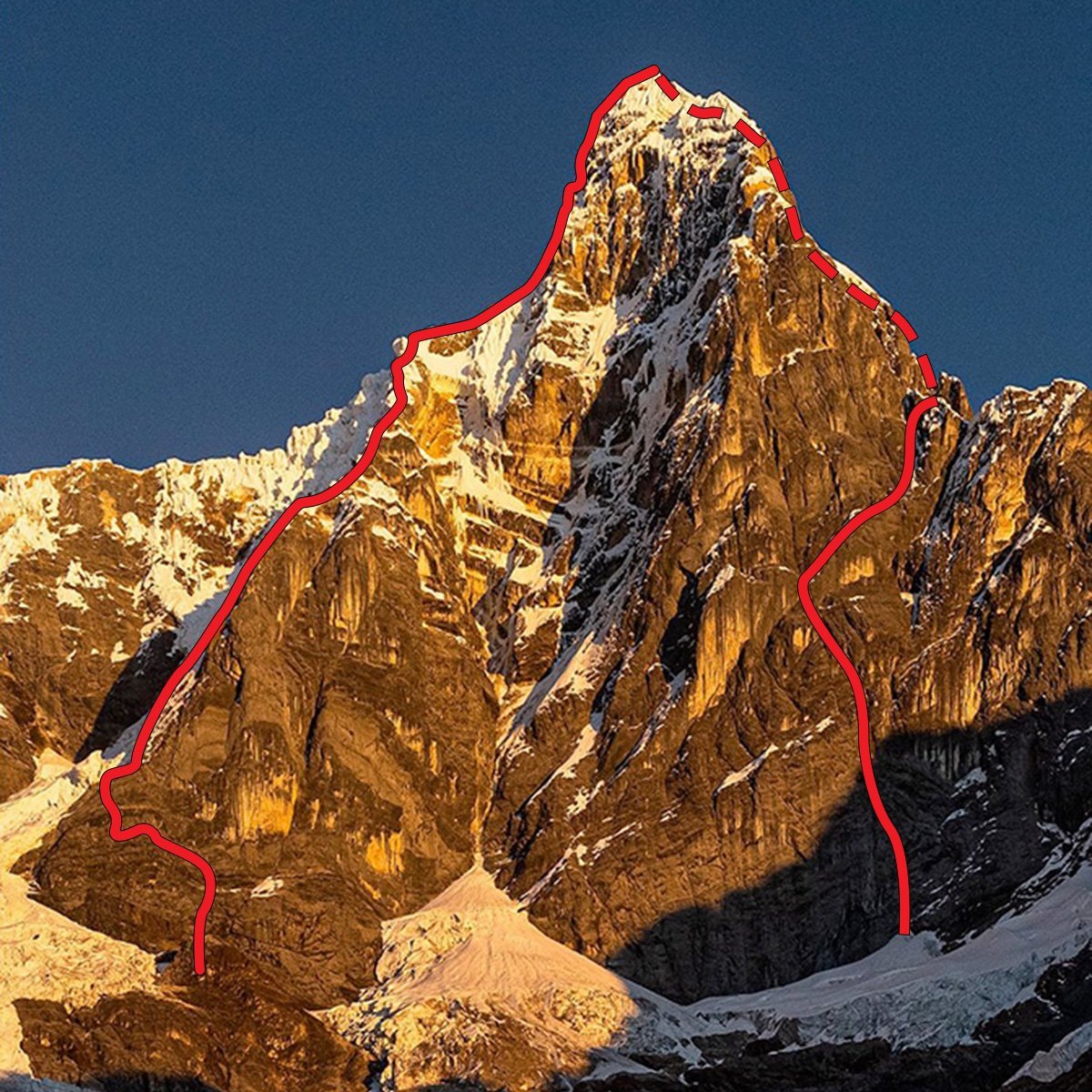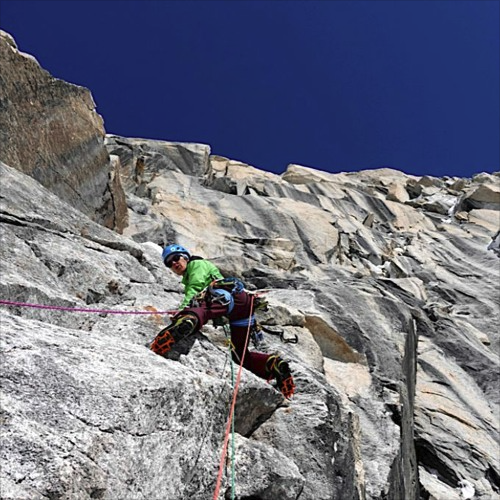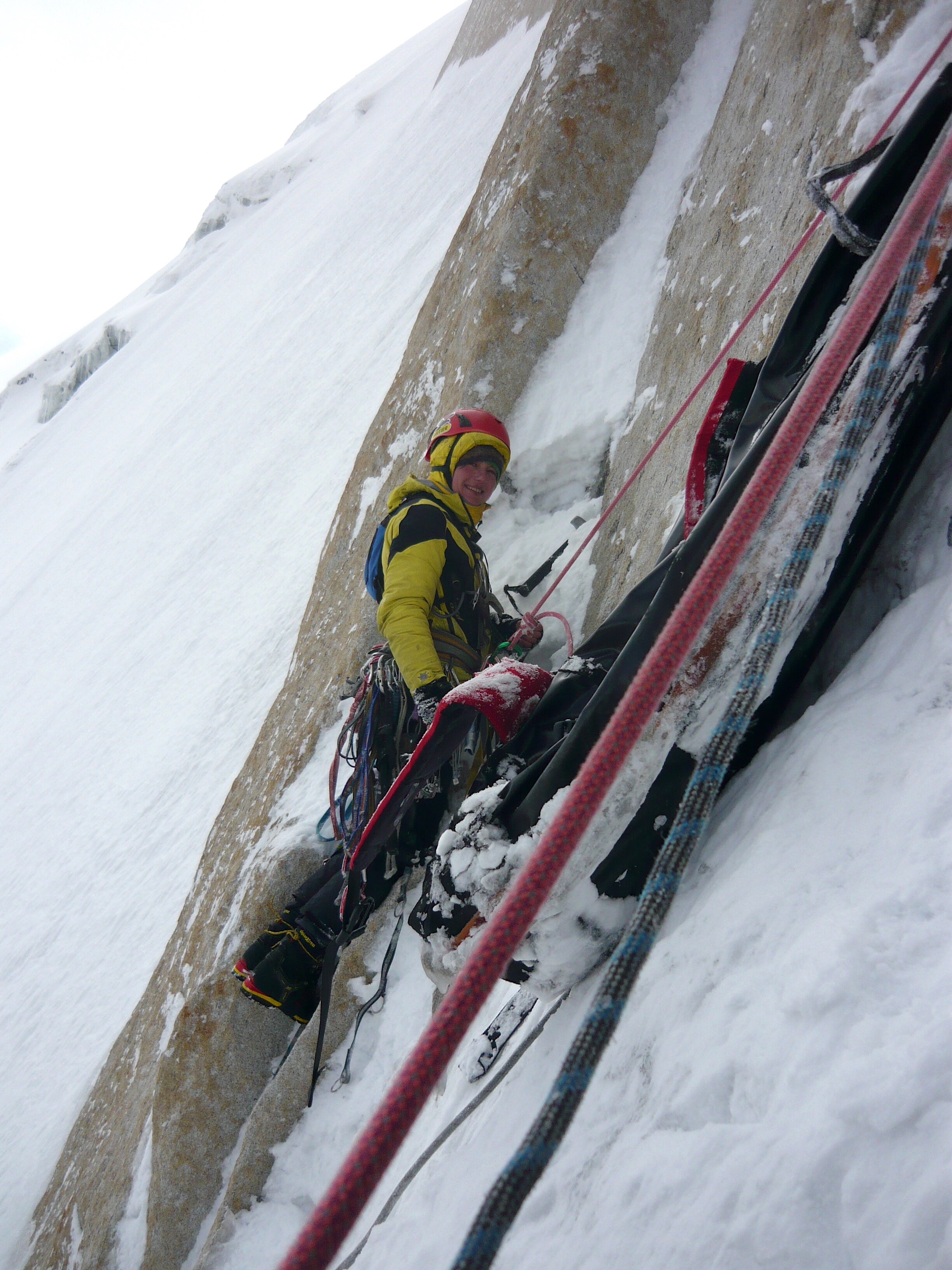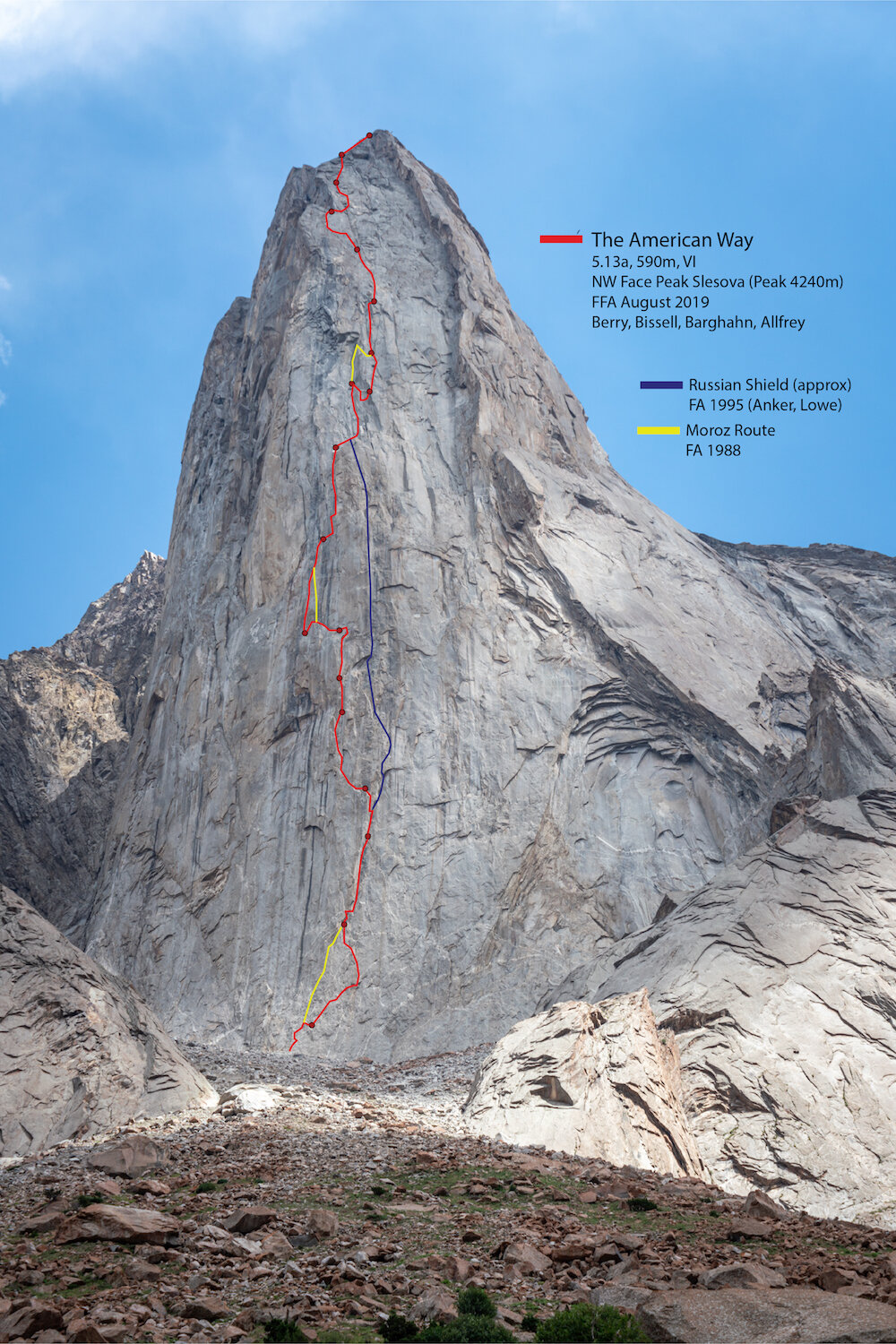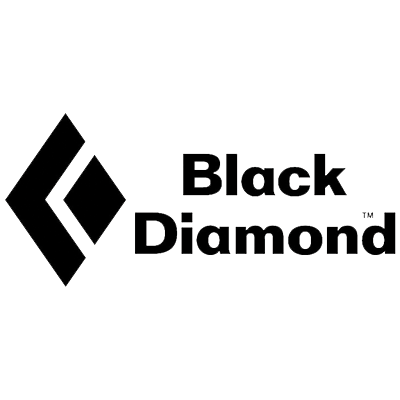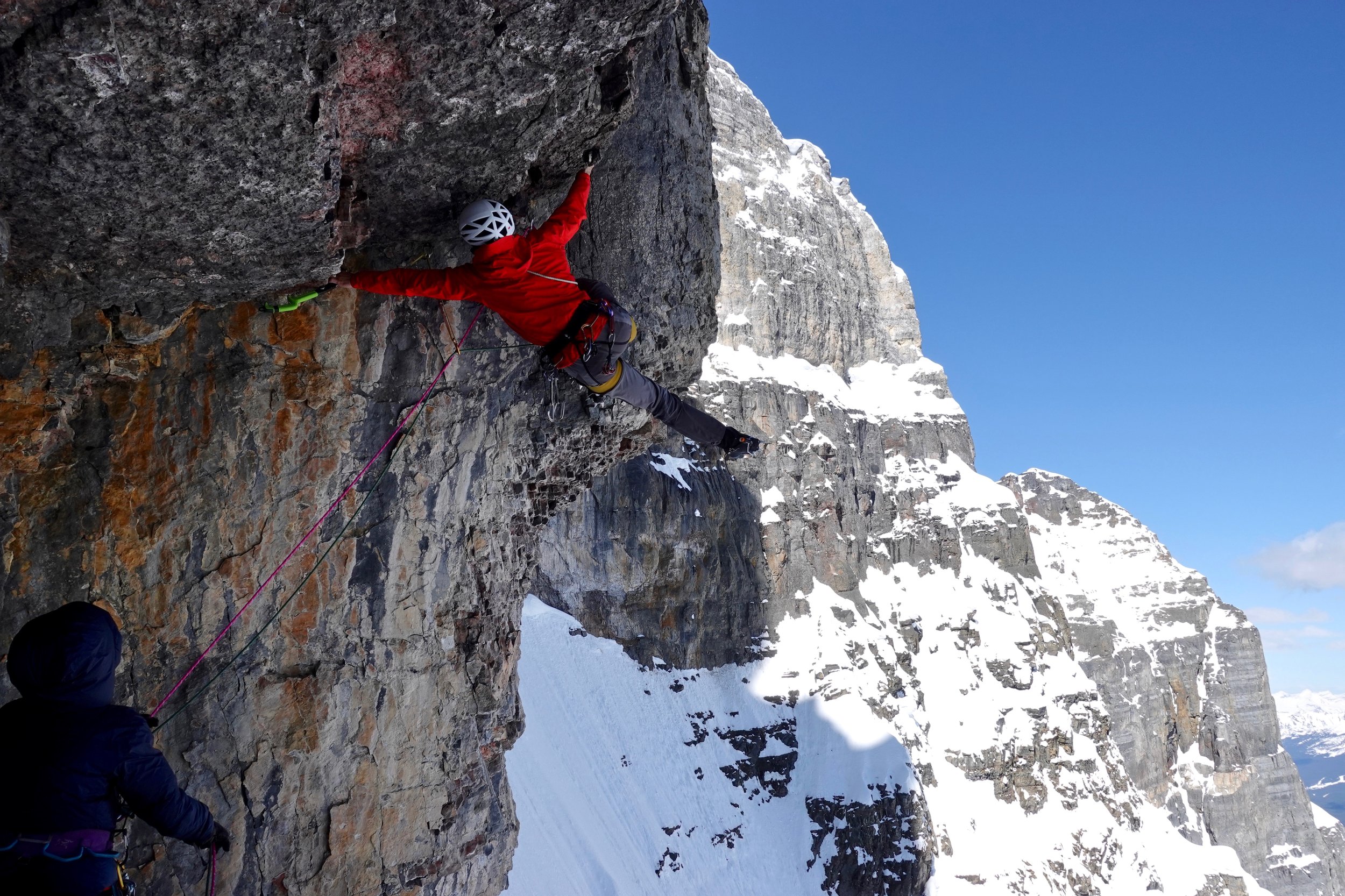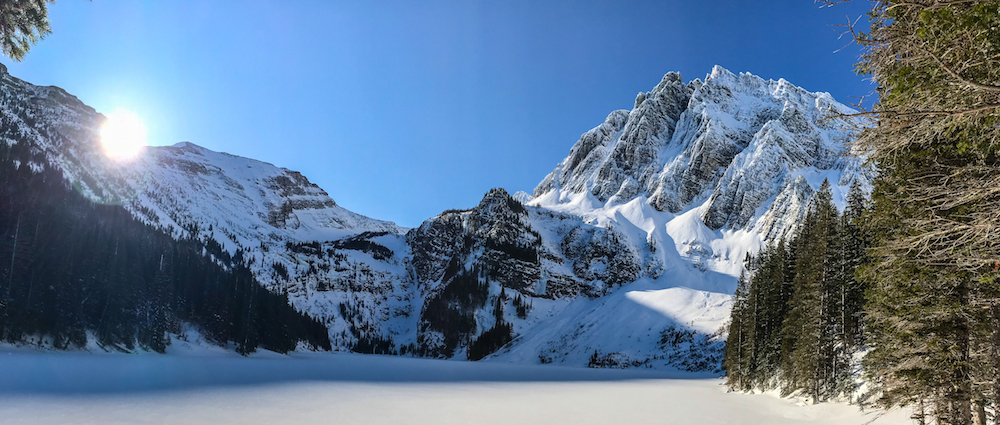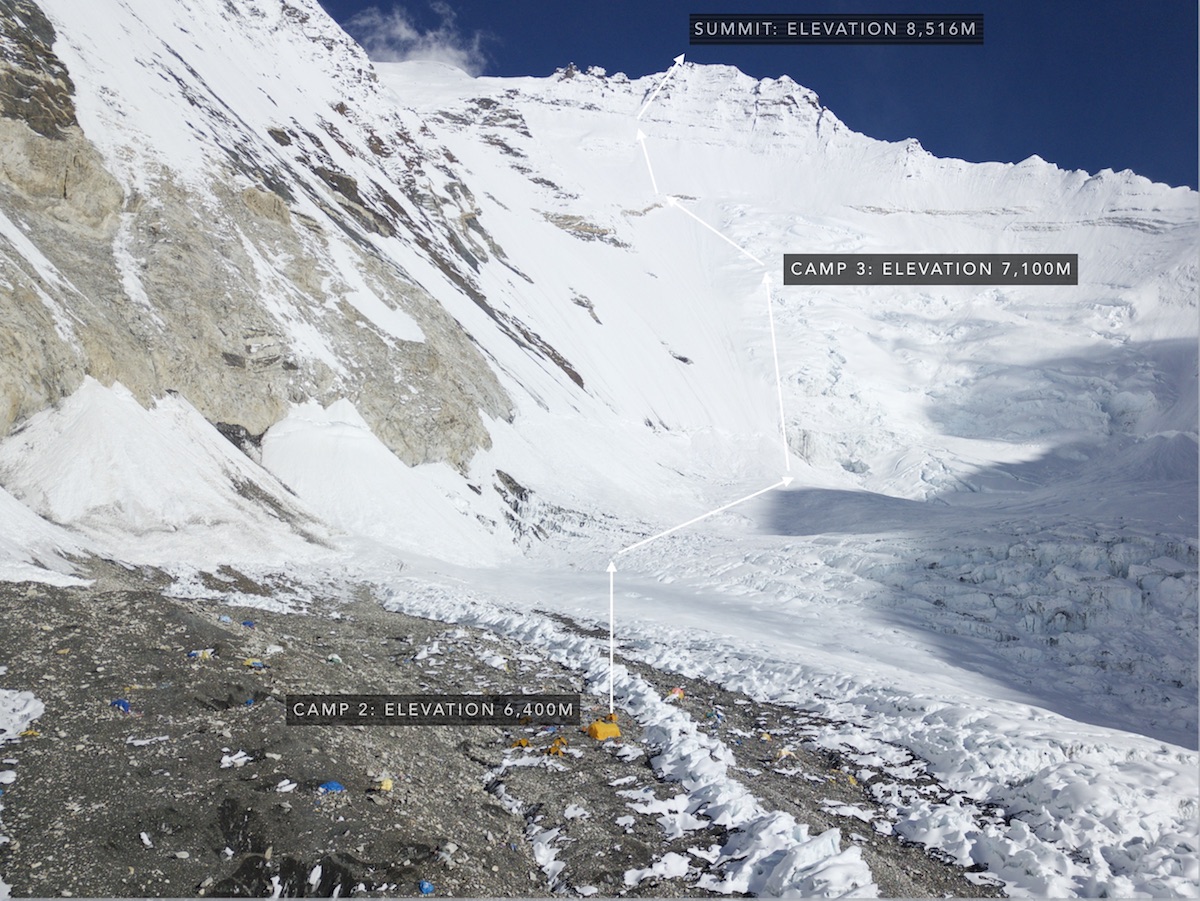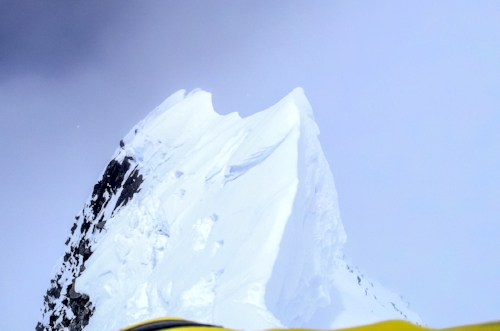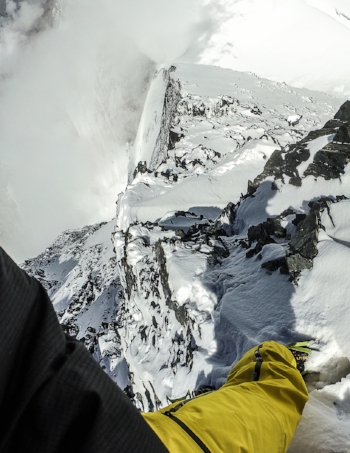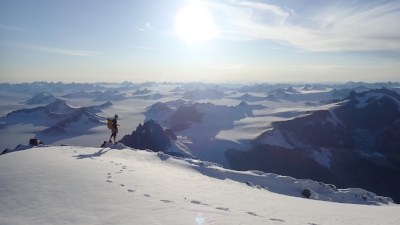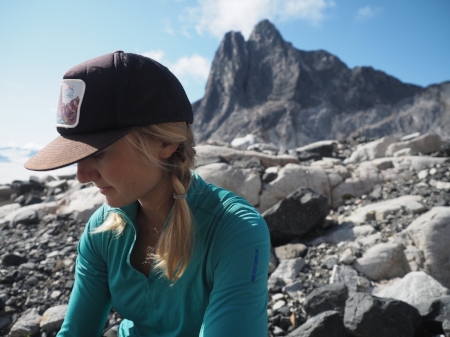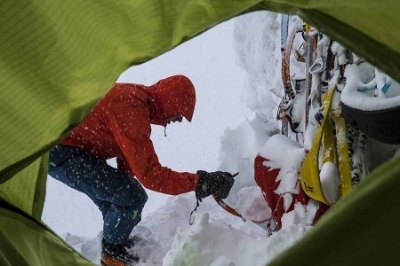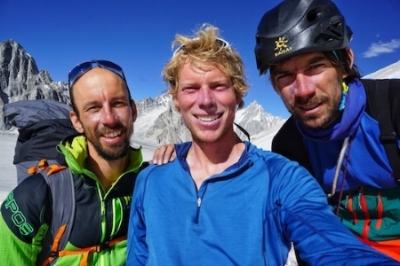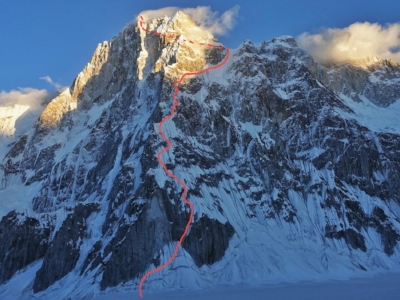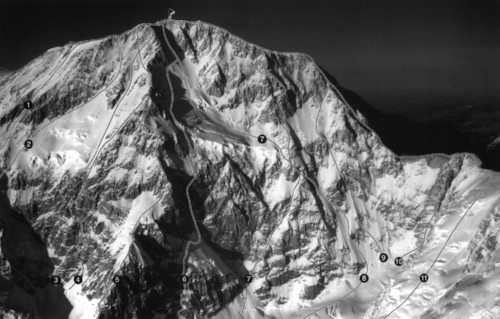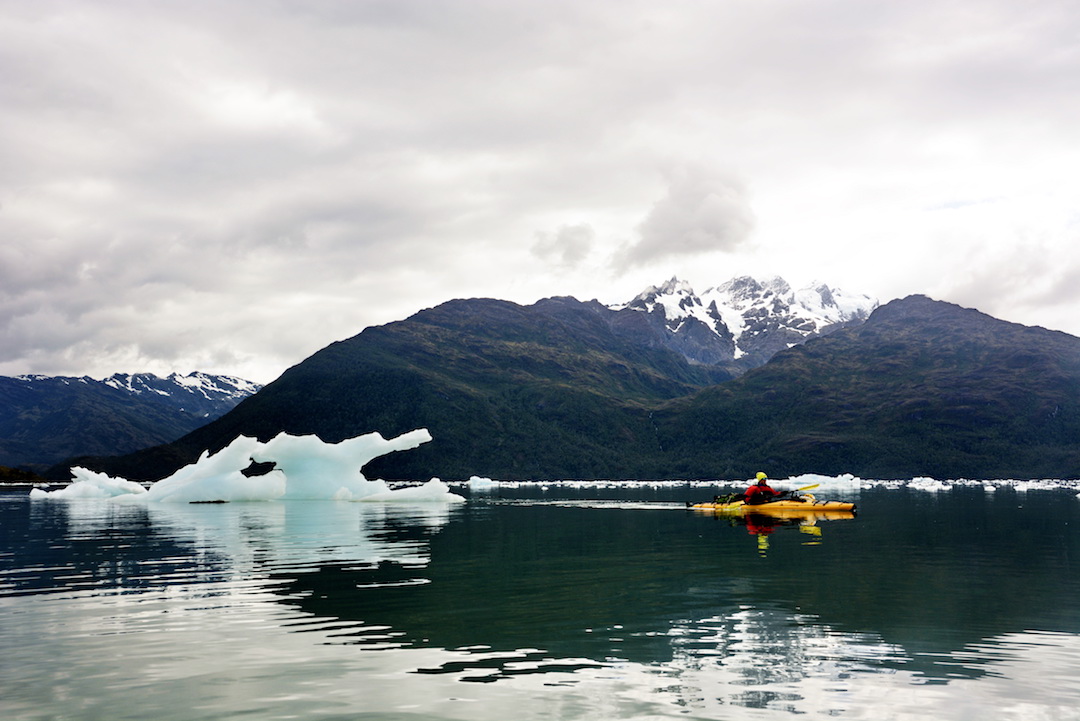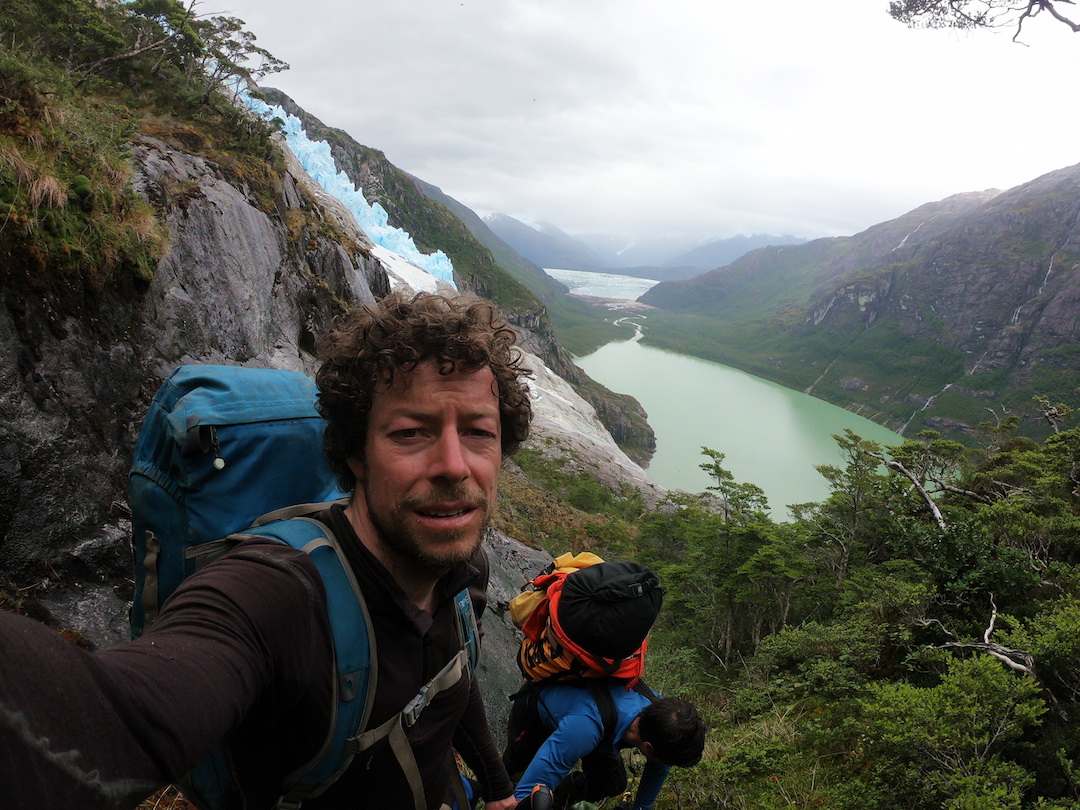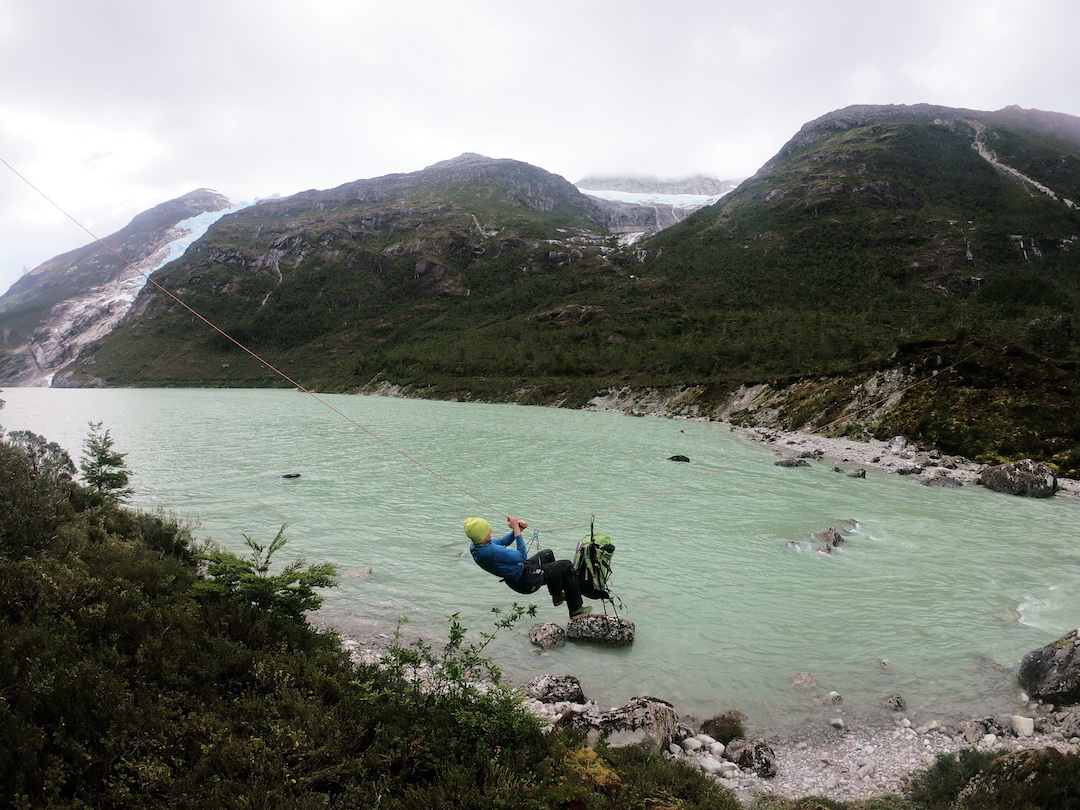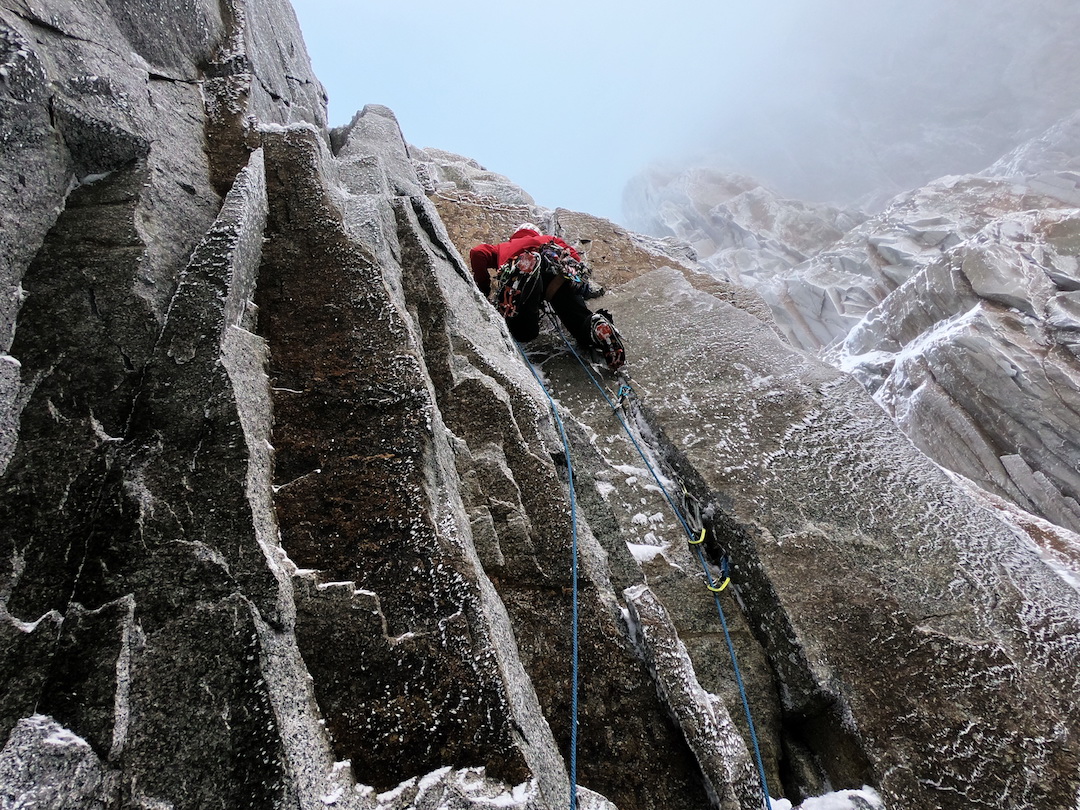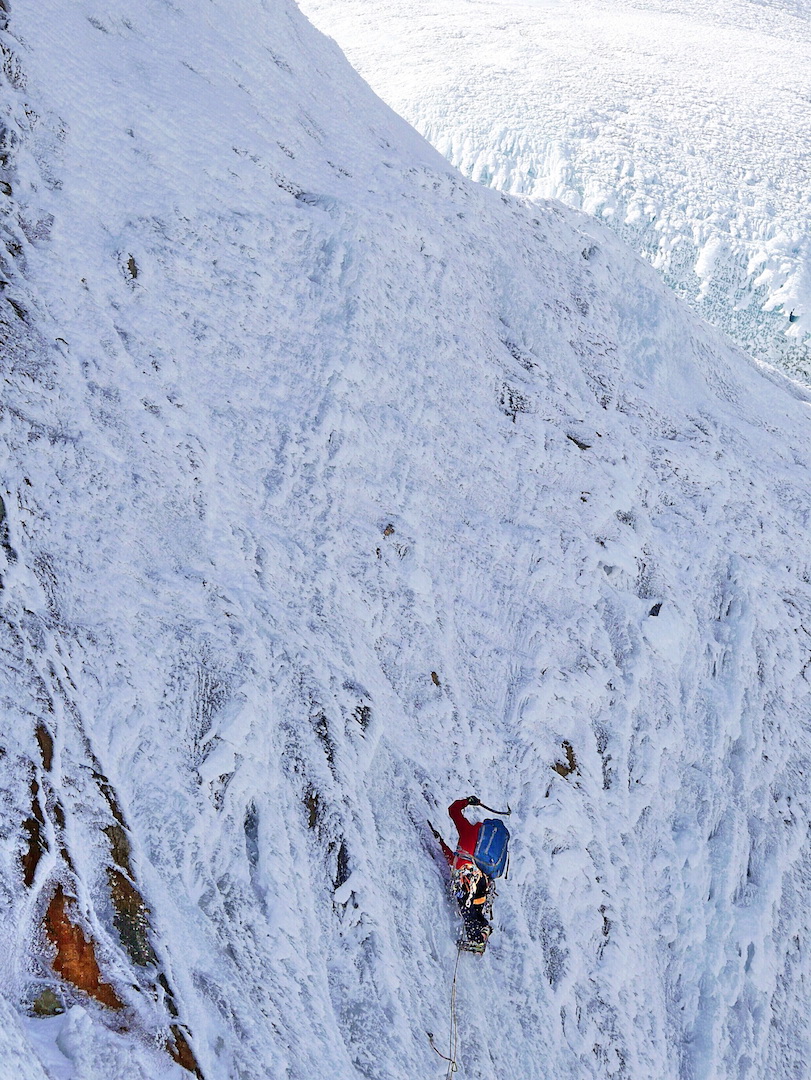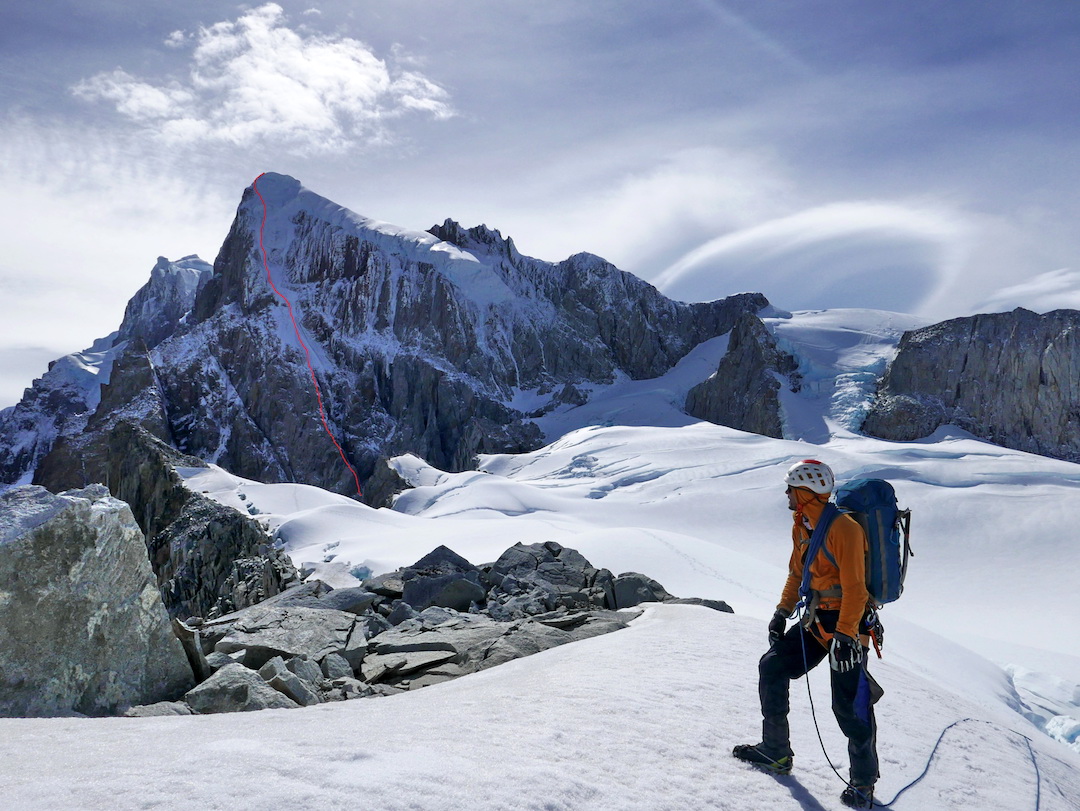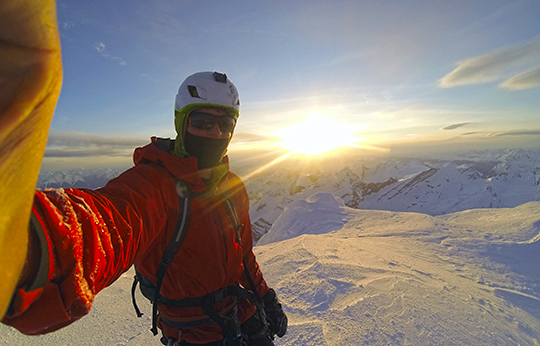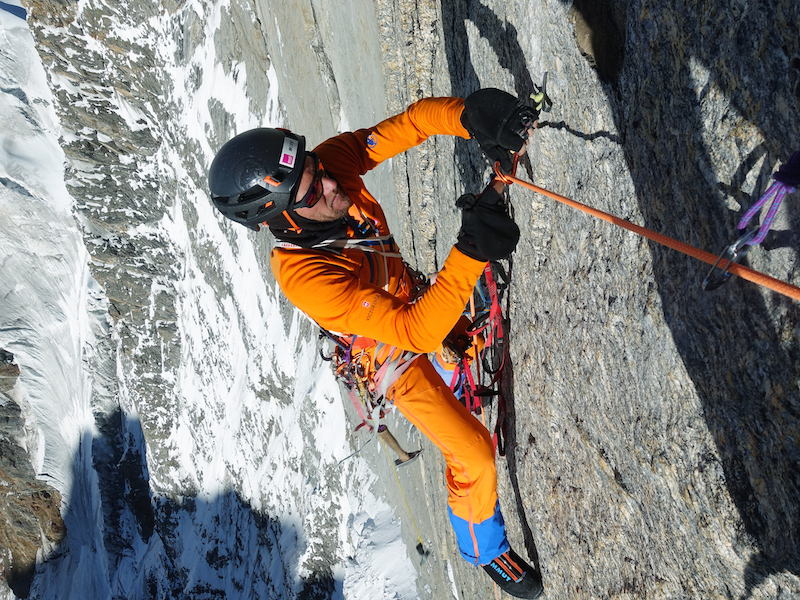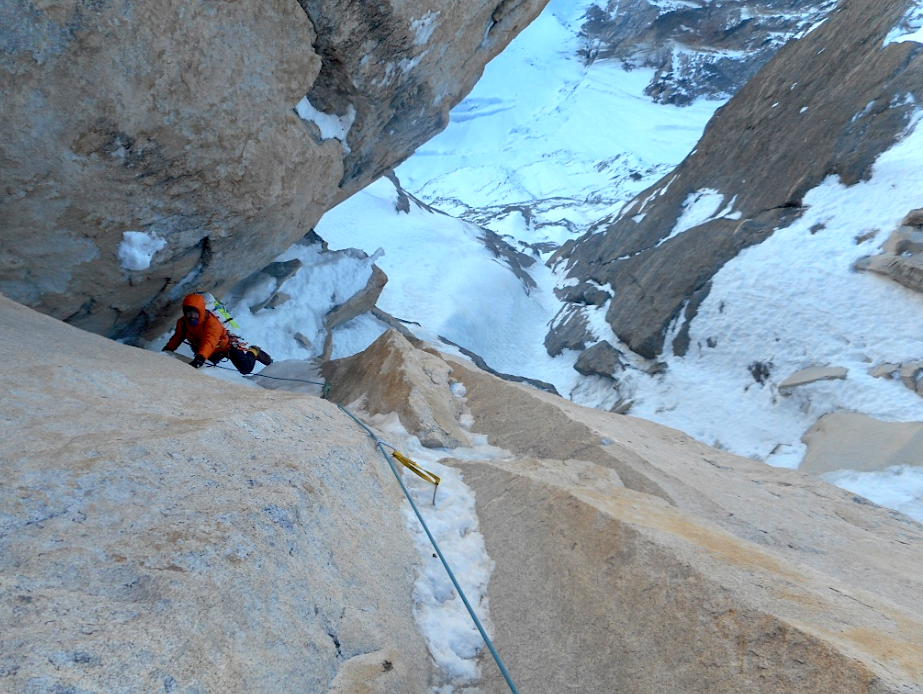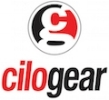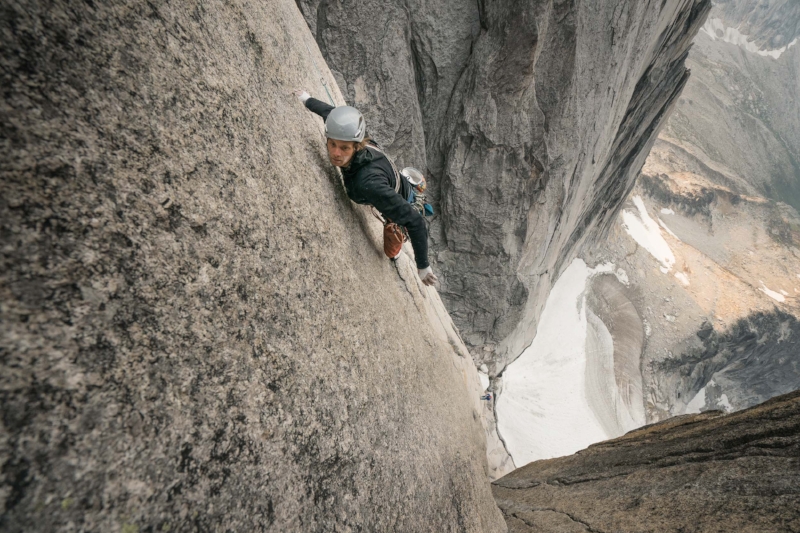The Cutting Edge podcast brings to life stories from the pages of The American Alpine Journal (AAJ), the annual publication of the American Alpine Club (AAC). Each episode, we interview world-class climbers just back from a wild new route or expedition, with in-depth discussion of the tactics behind the climb, along with the highs and lows of these adventures.
Now in its seventh season, the Cutting Edge is produced by the American Alpine Club and hosted by Jim Aikman, creator of the American Alpine Club’s “Legacy Series,” featuring interviews with climbing legends from the Club’s deep vault of oral history. In addition to newsmaking interviews, Jim explores the climbing history and significance of each peak or range we visit, drawing on the expertise of the American Alpine Journal team, as well as other climbers past and present.
Published annually since 1929, The American Alpine Journal is the world's most respected source of information about long new routes and mountain exploration. AAC members receive a free copy of the 368-page book each September. (Join the AAC.) Questions? Suggestions? Email us at [email protected].
On their second attempt in two years, in April 2025, Anna Pfaff and Andres Marin completed a direct new route up the south face of Mt. Providence in the Alaska Range, this time with Tad McCrea as their climbing partner. The nearly 1,000-meter climb had difficulties on rock, ice and snow. For Pfaff, who lost six toes to frostbite on a nearby mountain in 2022, the summit was a form of redemption. And on Mt. Providence, all three climbers found large doses of good fortune and serendipity. Host Jim Aikman interviewed each of the climbers to capture this compelling story of the power of friendship, belief and kismet in the Alaska Range.
Three climbers from the U.S. spent nearly two months last summer in Baffin Island's Auyuittuq National Park, and they came away with three long new routes climbed in remarkable style. The trio went ultra-light (by Baffin standards) and packed only a double set of cams, one large cam, a fistful of hooks, 30 beak pitons, and a few bolts to climb more than 10,000 vertical feet of granite. In this episode, Jim Aikman talks with ace wall climbers Brandon Adams, Miles Fullman, and Sam Stuckey to learn all about their wilderness adventures, the meaning of modern aid, and what it's like to achieve a flow state while beaking and hooking.
In September, three young American climbers—August Franzen, Dane Steadman, and Cody Winckler—completed the first ascent of 6,667-meter Yashkuk Sar I in northwest Pakistan. The 2,000-meter north pillar took five days to climb and descend, with challenges including precarious bivouacs, avalanches that forced them to find a new route in the middle of the climb, and crux mixed climbing at over 6,200 meters. For this episode, host Jim Aikman conducted an extensive interview with Wyoming climber Dane Steadman about this impressive ascent. Plus, alpinists Kelly Cordes and Graham Zimmerman, along with AAJ editor Dougald MacDonald, offer their perspectives on the unique challenges and attractions of climbing in the Karakoram.
This expedition was supported by a Cutting Edge Grant from the American Alpine Club.
Babsi Zangerl’s flash ascent of Free Rider on El Capitan in November—the first flash of any El Cap big-wall free route—was a highlight of the year in climbing. In this interview, the 36-year-old Austrian climber describes her preparation, fears, and the intense effort of her no-falls ascent on the 5.13a wall route.
Plus, Alex Honnold and Josh Wharton share their personal perspectives on Free Rider. AAJ editor Dougald MacDonald adds context on Babsi’s historic ascent. And you'll hear Jamie Logan describe free climbing on this line way back in 1972.
Photo of Babsi Zangerl high on El Cap by Miya Tsudome for Highpoint Productions.
Born and raised in the heart of the Pyrenees, Kilian Jornet is the GOAT of mountain running and skimo, and he’s an accomplished climber too. This past summer, Jornet used his extraordinary fitness and deep reservoir of mountain skills and savvy to tackle one of the greatest challenges of the Alps: a traverse of all 82 of the range’s 4,000-meter peaks, solely by foot and bike. The fastest previous time for this link-up was 60 days. Jornet did it in 19.
Cutting Edge host Jim Aikman interviewed Kilian Jornet about his “Alpine Connections” project—the preparation, the physiological and psychological challenges, and the real dangers of covering hundreds of kilometers of serious alpine terrain at speed, often alone. For context on the history of grand Alpine enchainments and commentary on Jornet’s latest feat, Jim spoke with Colin Haley, elite climber and Chamonix resident; Buzz Burrell, one of the originators of the Fastest Known Time (FKT) movement; and Dougald MacDonald, editor of the American Alpine Journal.
Is it mountaineering? Is it running? Whatever you think of a feat like this, it’s undeniably at the cutting edge.
Mt. Dickey and the other giant peaks lining the Great Gorge of the Ruth Glacier in Alaska have been fertile venues for the evolution of alpinism. So it was for Tom Livingstone and Gašper Pintar in the spring of 2024, when they set out for a new line up Dickey’s 5,000-foot south face. To navigate the challenges of this iconic area, they combined rock, snow, and ice techniques along with intricate route-finding and their signature British and Slovenian resilience. In this episode, Tom tells the story of their new route, and we also hear about the Ruth Glacier's place in climbing history from AAJ Editor Dougald MacDonald and veteran alpinist Freddie Wilkinson. Plus, climber and author David Roberts talks about Dickey's first wall route (climbed 50 years ago!) in audio from the AAC archive.
White Sapphire is a peak of 6,040 meters or just under 20,000 feet in India’s Kishtwar Himalaya that had only been climbed twice. Pete Takeda, the interviewer for this episode, had shared photos of an unclimbed big wall on White Sapphire with a young friend named Christian Black. In turn, Christian recruited his friends Hayden Wyatt and Vitaliy Musiyenko as partners. They won a grant from the American Alpine Club, and in September they all headed to India.
Two of the three climbers had never been to the Himalaya, and this interview captures their wide-eyed enthusiasm, as well as their ability to go with the flow—a critical element for success in the Greater Ranges. The result was a challenging new route up White Sapphire from the north: Brilliant Blue (850m, AI3, 80°, M7+).
On October 12, climbers Matt Cornell, Jackson Marvell and Alan Rousseau summited 7,710-meter Jannu, or Khumbakarna, by a new route up the north face, climbed in alpine style. Jannu’s main north face had only been climbed once, in 2004, by a 12-man team that spent nearly two months on the face and fixed over 10,000 feet of rope. The American trio carried a single lead rope and took only a modest rack and no bolt kit. Their route, Round Trip Ticket, was climbed and descended in one week. Years of preparation and innovation went into this remarkable ascent, and in this episode of the Cutting Edge, we're fortunate to hear all three climbers telling the story.
In late September, Connor Herson and Fan Yang free climbed Hairline on the east face of Mt. Whitney, the highest peak in the Lower 48 at around 14,500 feet or 4,420 meters. Hairline is a very steep, 13-pitch route originally climbed in 1987. The 55-meter crux pitch went at 5.13+ or 8b, at over 13,000 feet in elevation. The two other hard pitches go at 5.12 and 5.13-.
The red line on the east face of Mt. Whitney is the approximate route of Hairline. The yellow line shows the classic East Face Route, which Herson and Yang scrambled down after finishing all the hard pitches on Hairline and then scrambled back up to climb the final three pitches of Hairline the next morning. Photo by John Scurlock.
Connor climbed 5.14c/8c+ at age 14 and became famous at 15 for free climbing the Nose of El Cap. He’s now 20 and a student at Stanford University. At age 36, Fan is also a 5.14 climber, and he’s an M.D., an engineer, and a researcher in the field of artificial intelligence applied to medicine. He first tried Hairline in 2019 (and freed the crux pitch), but COVID and then difficulty finding partners kept him off the route for several years.
Connor and Fan had never really climbed together when they teamed up for Hairline, but their partnership clicked. After a couple of days of preparation on the route, they sent all the key pitches in one day with no falls. From their high point, they downclimbed the East Face Route to camp, then scrambled back up the next morning to finish the easy final pitches to the summit of Mt. Whitney.
AAJ assistant editor Michael Levy interviewed the two about their climb.
To reach the north face of Tirich Mir, Hiraide and Nakajima climbed from the Upper Tirich Glacier to a 6,200-meter col and downclimbed 700 meters on the far side to a camp on the Lower Tirich Glacier. They descended from the 7,708-meter summit by the normal route on the northwest ridge and Upper Tirich Glacier.
This episode is all about Tirich Mir in Pakistan’s High Hindu Kush. This past summer, two Japanese climbers completed an ascent of the secretive north face of this 7,708-meter mountain—an isolated wall that probably had never been attempted before. For the last decade, Kazuya Hiraide and Kenro Nakajima have formed one of the most successful partnerships in the world for lightweight, alpine-style new routes on high 7,000-meter peaks. Kazuya had dreamed of climbing Tirich Mir for more than 20 years, and the route they pieced together was a creative and committing solution to a very complex mountaineering problem. We'll also hear about their next goal: an audacious attempt on an alpine-style ascent of K2's west face.
To introduce Tirich Mir and its long history, we spoke with AAJ senior editor Lindsay Griffin, an expert in the climbing history of the Greater Ranges. Among other things, we learn why a member of the first ascent party carried a huge rock to the summit!
More climbs by Hiraide and Nakajima:
Shispare’s northeast face (and first alpine-style ascent), 2017
Sarah McNair-Landry and Erik Boomer only started climbing a few years ago, and their technical level maxes out around 5.11. Yet their extended, multi-sport expeditions all over Baffin Island are without a doubt cutting edge. This year, they made three separate trips: one for climbing, skiing, and kiting on Baffin Island’s remote east coast; one to explore a new zone of beautiful walls near Baffin’s southern tip; and a third to fulfill the dream that got them into climbing in the first place: climbing the mighty peak of Mt. Asgard. (They climbed it twice.) Chris Kalman spoke with Sarah and Erik about this year’s adventures and about their unique and enviable role in the modern exploration of Baffin Island.
AAJ 2021: Sarah and Erik’s first climbing adventure on Baffin Island, exploring the cliffs above Anijaaq Fjord in Frobisher Bay, south of Iqaluit, their home town.
AAJ 2022: This 45-day climbing and kayaking trip to Inuksuit Fjord, southwest of Clyde River, is the subject of “A Baffin Vacation,” a 13-minute film that has been touring outdoor festivals.
AAJ 2023: An incredible 70-day skiing, kiting, climbing, and kayaking trip to Kangiqtualuk Uqquqti (formerly known as Sam Ford Fjord).
In the summer of 2023, Matt Segal recruited his old friend Jesse Huey and an alpine newbie, Jordan Cannon, for an attempt on Trango Tower in Pakistan. And not just by any route: Segal dreamed of free climbing the unrepeated Cowboy Direct, first climbed way back in 1995. The El Cap–size wall route up the southeast face goes at 5.13a and summits at over 20,000 feet.
The trio made a powerful combo: Matt, a solid 5.14 climber; Jesse, an all-around master; and Jordan, a big-wall free climbing ace. In this interview, led by Chris Kalman, the three climbers describe their 15-day final push on the route, the superb partnership they formed, and how they overcame obstacles of poor weather, lack of food, and surprisingly difficult alpine climbing near the summit to succeed with the second ascent of this legendary climb.
Read Bobby Model’s report on the first ascent of Cowboy Direct in AAJ 1996.
The team at the terrace bivouac below the upper west face of Chambe. From left to right: Mark Richey, Taki Miyamoto, Will Carey and Ray Rice.
The inspiration for the route name.
In July 2023, four climbers from New England—Will Carey, Taki Miyamoto, Ray Rice, and Mark Richey—completed what just might be the longest pure rock climb in Africa. Their 800-meter route (Kuche Kuche, 5.12b) climbs straight up the middle of the upper face of Chambe, a huge granite monolith in Malawi. For this episode, AAJ assistant editor Michael Levy (who climbed on Chambe himself for several weeks in July 2022) spoke with Will and Mark about their adventures. Although both climbers have done many new routes (Mark is a two-time Piolets d'Or winner for his first ascents in the Karakoram), ground-up bolting a huge, exotic rock face was an entirely new experience.
The first route to breach the upper west face of Chambe was climbed by Frank Eastwood and Ian Howell in 1977. They climbed the entire west face (lower and upper) to create a grade VI route, of which the upper half gained 650 meters at 5.9 A1.
Learn about the Global Climbing Initiative’s Malawi expedition here and here.
Learn more about recent developments in the Mulanje Massif of Malawi in Michael Levy’s article for AAJ 2023.
Often described as one of the most beautiful mountains in North America, Mt. Huntington has been drawing top alpinists to the Alaska Range ever since the peak's first ascent in 1964, led by the great French climber Lionel Terray. In April 2023, Dane Steadman (USA), Zac Colbran and Grant Stewart (both from Canada) flew to the Tokositna Glacier for their own adventures. The three of them climbed a cool new route up the west face of Huntington, and two of them then made a second foray onto the west face, repeating a rarely climbed variation to the Harvard Route and freeing the classic Nose pitch. AAJ assistant editor Michael Levy interviewed all three climbers to get their story.
Jackson Marvell, a 27-year-old alpinist from Utah, just completed his second new route up the mile-high east face of Mt. Dickey in Alaska's Ruth Gorge. Along with regular partners Matt Cornell and Alan Rousseau, Jackson climbed Aim for the Bushes (AI6 M6 X) over three days in late March. The AAJ's Michael Levy spoke with Marvell to learn all about the new route, the intricacies of extreme snow climbing, and the origin of that route name.
In 2019, Marvell and Rousseau completed another first ascent on Mt. Dickey: The Ruth Gorge Grinder. See Rousseau’s AAJ report here.
The Duperier-Langenstein descent route on Denali’s upper southwest face. Starting their day at the 14,000-foot camp on the West Buttress route, the two climbed the normal route to the summit, then started their descent to skier’s right of the upper Cassin Ridge. After more than 3,500 feet of technical descent, an icy traverse of nearly a kilometer brought them to the West Rib route. They continued down this route via the Chicken Couloir (hidden in the photo) to reach the Northeast Fork of the Kahiltna Glacier and eventually Camp 1 on the Kahiltna, about 12,500 feet below the summit. The complete descent took about seven hours. Photo by Tiphaine Duperier
Tiphaine Duperier and Boris Langenstein from France have made first ski descents in many parts of Asia. But until 2022, Tiphaine had never been to North America. In May, she flew to Alaska with Boris to pursue a crazy dream: a ski descent of the Cassin Ridge on Denali. The two quickly realized this wouldn’t be possible (at least this year), but an alternate vision soon appeared: a ski line down the upper southwest face of Denali. On May 31, the two climbed to the summit and started down just to skier’s right of the upper Cassin. After descending about 1,000 meters, they made a long, terrifying traverse to join the West Rib route and continued down all the way to the Northeast Fork of the Kahiltna Glacier. The total descent was more than 3,800 meters. For this episode of the Cutting Edge, Tiphaine spoke with guest interviewer Brody Leven, a professional ski mountaineer himself, about the planning and execution of this bold descent.
Recent AAJ stories by Tiphaine Duperier: Laila Peak Northwest Face (AAJ 2019); Spantik and Nanga Parbat (AAJ 2020); First Descents in the Western Karakoram (AAJ 2022); Ski Descent of French Spur on Gasherbrum II (AAJ 2022).
Have you ever wondered how ordinary climbers manage to put together an expedition to the Himalaya? Our guests Ethan Berman and Maarten Van Haeren just made the first ascent of the northeast face of Khang Karpo (6,646 meters) in Nepal during their very first expedition to the mountains of Asia. In this episode, AAJ editor Dougald MacDonald interviews the pair about their beautiful new route, and then asks them to go into detail about planning an expedition.
Read Ethan Berman’s AAJ 2022 article about his six-week expedition to the Mt. Logan area with Maarten Van Haeren, Alik Berg, and Peter Hoang.
The Slovak Direct route on Denali’s south face. The route gains about 9,000 vertical feet. The bivouacs shown here are from Chantel Astorga and Anne Gilbert Chase’s 2018 ascent. Photo by Andy Houseman.
With only about a dozen ascents in nearly four decades, the Slovak Direct route on Denali's south face is one of North America's premier hard climbs. Sixteen years after the first ascent, Scott Backes, Steve House, and Mark Twight famously upped the ante by climbing the route in single-push (“night naked” style: bringing no tent or sleeping bags and climbing nearly continuously for 60 hours. Twenty-two years later, in the spring of 2022, the Slovak saw another round of single-push ascents, blazing up the route in less than 24 hours.
For this episode, AAJ editor Dougald MacDonald spoke with climbers from all three of these ascents: Steve House, Matt Cornell, and Rob Smith. They talked about the progression in climbing gear and tactics that allowed such amazingly fast climbs, but also about universal aspects of challenges like this that have nothing to do with speed records.
Read Scott Backes’ 2001 AAJ story about the original 60-hour single-push climb of the Slovak Direct.
Ben Gilmore’s 2001 AAJ report about the second ascent of the route. Gilmore and Kevin Mahoney found a variation avoiding a 5.9 X ramp that was followed by the Slovaks and by the Backes-House-Twight team; this variation has been used by all teams since 2000.
Anne Gilbert Chase’s 2019 AAJ story about the first female ascent of the route. Chase also was interviewed for the Cutting Edge episode 9.
The Supercanaleta (“Supercouloir”) splits the west face of Chaltén, gaining about 1,600 meters from the bergschrund to the summit.
In mid-September, American Colin Haley, 38, added another impressive solo ascent to his long list of ground-breaking alpine climbs (both roped and unroped). During an impromptu late-winter trip to Patagonia, in a round-trip of around 21 hours, Haley climbed the Supercanaleta route on Chaltén (Fitz Roy), the first time this 1,600-meter climb has been soloed in winter. And by solo, we really mean alone: Haley never saw another climber during his five trips into the high mountains. In this episode, Michael Levy quizzes Haley not only about the physical aspects of such a difficult, lonely climb, but also the psychological ups and downs of soloing in winter.
Colin’s extensive breakdown of the climb (and many more photos) can be found at his Skagit Alpinism blog.
The severely bent pick during Haley’s first attempt. He was able to straighten the pick and continue, but eventually ran out of time before a severe storm was forecast to arrive.
In July, German climber Fabian Buhl and Will Sim from the U.K. reached the summit of a 5,800-meter rock and ice tower in Pakistan. Their first ascent wasn't particularly big or difficult. What made the climb extraordinary was their approach: After a leisurely breakfast in Karimibad, the nearest big town, they flew paragliders to the glacier at the foot of the tower, gaining about 2,000 meters in elevation. After climbing the peak early the next day, they rappelled back to their bivouac and flew back down to the valley. They were back in town for dinner. For this episode, AAJ assistant editor Michael Levy spoke with Fabi and Will about the new possibilities combining paragliding and alpinism—and the hazards of this new game.
American climber John Bouchard’s article “Paragliders and Modern Alpinism” from the 1988 AAJ can be read here.
The south side of Jirishanca, showing, on the left, the approximate line of the Canadian route Reino Hongo (Berg-Roberts) and, on the right, the line followed by Vince Anderson and Josh Wharton. The latter was climbed to the ridgeline (east buttress) in 2003, but it had not been completed to the summit until 2022.
5.13 M7 WI6. These are the kinds of numbers that catch climbers’ attention, especially when you’re talking about climbing a 6,000-meter peak in Peru. But numbers don’t come close to capturing all the challenges of a route like the one done by our guests Vince Anderson and Josh Wharton in July. In this episode, the Colorado-based climbers explain why it took four trips to Peru to complete their all-free, alpine-style line up Jirishanca. And why no one else had reached the summit of Jirishanca via the southeast face in nearly 20 years.
The 2004 AAJ included accounts of the Italian route to the east buttress, the new route Fear and Loathing (Bullock-Powell, climbed to within half a pitch of the summit), and a history of climbing on Jirishanca by Jeremy Frimer, author of a guidebook to the Cordillera Huayhuash.
Pumari Chhish East, a nearly 7,000-meter peak in the Karakoram, had been the goal of at least six expeditions over the last 15 years. In late June, the French-American trio of Christophe Ogier, Jérôme Sullivan, and Victor Saucède finally reached the top. In the rapidly warming Karakoram, an effective strategy was key. In this episode, AAJ editor Dougald MacDonald speaks with Ogier and Sullivan about why they chose to approach the mountain a month earlier than other teams, why they avoided the peak's easiest lines, and how climate change is transforming alpinism around the world.
Steep rock and plastered snow made for slow climbing on the crux pillar of Pumari Chhish East’s south face.
Christophe Ogier following the very steep headwall pitch (rated about 6b or 5.10d) that Jérôme Sullivan led in rock shoes.
Here are two good articles on rockfall and other effects of climate change in the mountains:
Climbers and Guides Adapt to Changing Climate and Landscape in the Alps (UKClimbing.com)
Alpine Roulette: The Impermanence of Alpine Permafrost—And How This Changes Everything (AAJ 2019)
Though the 2022 team found plenty of Changabang’s famous white granite, they were able to avoid some of the 1976 ascent’s painstaking aid climbing with modern ice and mixed techniques.
In 1976, Peter Boardman and Joe Tasker from Great Britain climbed the west face of Changabang (6,880m) in India, the most technical climb at this altitude ever done at the time. In May of this year, 46 years later, the team of Dan Joll, Kim Ladiges, and Matt Scholes, from New Zealand and Australia, finally made the second ascent.
In this episode, we first speak with eminent climbing historian and American Alpine Journal senior editor Lindsay Griffin about the impact of the 1976 ascent, and then with Joll and Scholes about their climb this spring. The trio spent nine days on the bitterly cold mountain, and even though equipment and techniques have advanced immeasurably in the past half century, they still found plenty of challenge on this legendary route.
The two great books mentioned in this episode:
The Shining Mountain, by Peter Boardman
Savage Arena, by Joe Tasker
The east face of Golgotha (8,940 feet). The new route climbs the obvious central line, finishing right of the summit. The first ascent in 2012 followed the ramp on the lower left side of the face to reach the southwest face and then the summit. In 2019, a Slovenian pair attempted the central line and then climbed a route up the snow and ice ramps on the right, completing the second ascent of the peak.
In late March, Clint Helander and Andres Marin climbed the direct east face of Golgotha in Alaska's Revelation Mountains. The new route, Shaft of the Abyss (4,000', VI AI5 R M5 A0 90°), had been the goal of four expeditions by the two men, starting in 2016, and was the culmination of Helander's remarkable career in the Revelations, where he has completed 12 expeditions and numerous first ascents.
AAJ assistant editor Michael Levy spoke with Helander and Marin about the long history of the route, the life-threatening avalanche that cut short their first attempt, and the curious case of the missing tent.
The southeast ridge of Annapurna III was one of the great unclimbed features of the Himalaya. This towering ridge follows a knife-edge of loose snow and looser rock, gaining about 2,500 meters, to reach a 7,555-meter summit. The ridge had been tried multiple times, with no one getting higher than about 6,500 meters, roughly the high point reached on the first attempt back in 1981.
In late October and early November, three Ukrainian climbers—Nikita Balabanov, Mikhail Fomin, and Slava Polezhaiko, completed the route over 16 days, with another two and a half days to descend. AAJ assistant editor Michael Levy spoke with two of the climbers—Balabanov and Fomin—to get the complete story of their first attempt in 2019 and their eventual success.
Thirty-one-year-old Archil Badriashvili from Georgia and regular partners Giorgi Tepnadze and Baqar Gelashvili mounted an impressive expedition to the Hindu Kush in far northwestern Pakistan this fall. After warming up with a new route up 6,833-meter Laguta-e-Barfi, the trio made the first ascent of the highest unclimbed mountain in the area: 7,303-meter Saraghrar Northwest. They spent five days climbing a granite headwall at over 6,500 meters, followed by a tenuous traverse to the summit. The full climb of the northwest face gained 2,300 meters (rated Caucasus 6B or ED2) and took nine days round-trip.
In this episode, Archil speaks with AAJ editor Dougald MacDonald about growing up and training in the "Little Himalaya" of the Caucasus mountains, the difficult climb of Saraghrar Northwest, and the motivating power of Georgian folk songs on difficult ascents.
You can find several examples of the songs he mentions in the video below. At around 1:20, you can see Giorgi Tepnadze singing and dancing at a miserable belay during the first winter ascent of the south face of Shkhara. At the very end, after the credits, there is footage of Baqar Gelashvili playing “Giorgobistve,” the song featured in this episode.
Archil Badriashvili’s account of the impressive winter new route on Shkhara is available here.
The 700-meter rock headwall on the northwest face of Saraghrar Northwest was all above 6,500 meters and took five days to climb.
In mid-June this year, alpinist Chantel Astorga realized a long-held dream: a solo ascent of the classic Cassin Ridge on Denali, climbing 8,000 vertical feet from the bergschrund to the summit in 14 hours and 39 minutes. An avalanche forecaster based in the Sawtooth Mountains of Idaho, Astorga has been guiding and climbing on Denali for well over a decade. As you’ll hear in Episode 44 of the Cutting Edge, Astorga applied all of her experience on Denali to plan and execute the first female solo of the Cassin, including a complex approach down the Seattle Ramp to reach the base. (Possibly the first time this route has been skied.) She then carried her skis up and over, descending the upper West Buttress to return to her high camp.
This is the third ground-breaking climb on Denali for Astorga in the last six years. In 2015, she and Jewell Lund climbed the Denali Diamond, making the first all-female ascent of the mountain’s steep southwest face. Three years later, Astorga and Anne Gilbert Chase completed the Slovak Direct on the south face, perhaps Denali’s most difficult route. Chase’s article about the climb was featured in AAJ 2019. The previous year, in AAJ 2018, Astorga wrote about her first ascent of the southwest face of Nilkanth (6,596m) in India with Chase and Jason Thompson.
Speaking with the AAJ’s Lauren Miller for this episode, Astorga describes her tactics and decision-making for the Cassin Ridge in great depth. It’s a peek inside the mind of a Denali master.
Vitaliy Musiyenko fell in love with California's High Sierra in his early 20s. A decade later, at age 34, he is among the most prolific and accomplished explorers of the Range of Light, having climbed well over 100 long new routes. For much of this time, he has dreamed of putting his experience to the test on a massive traverse of the Sierra Crest: by far the biggest technical traverse ever attempted in a range celebrated for its challenging linkups.
Vitaliy made his first attempt on what he came to call the Goliath in 2016, doing the complete Evolution Crest, from Piute Pass to Bishop Pass. But something told him if he kept going that time, he might never make it out alive. His ultimate goal would add an extended version of the Palisade Traverse, including some sections that had never been done. In early August of this year, with a good forecast and eight days of food, he started out again.
For episode 43 of the Cutting Edge, Lauren Miller, herself a longtime Sierra climber, spoke with Vitaliy about his extensive preparation and the physical and mental challenges of this Goliath traverse.
Vitaliy’s article “The Golden Age,” published in AAJ 2017, explores his remarkable 2016 season in the High Sierra, including 21 long new routes and a three-day traverse of the full Evolution Crest.
Our guest this episode is the Czech climber Marek Holeček, among the most successful alpine climbers of the past two decades. Holeček has climbed new routes all over the world, from Kyrgyzstan to Patagonia, Antarctica to Afghanistan. Two of his biggest successes came in the past five years, when he was already in his 40s: new routes on Gasherbrum I in Pakistan and Chamlang in Nepal, both of which were honored with Piolets d’Or. His new route up 7,162-meter Baruntse in Nepal, climbed in late May with Radoslav (Radek) Groh, is of similar stature.
Holeček and Groh climbed the west face of Baruntse, 10 kilometers west of Makalu, in four days. Near the top, a fierce storm arrived a day and a half earlier than expected, and they had to fight to the summit, where they were pinned down for four nights. Finally, on their ninth day out from base camp, the storm let up enough for them to descend about 1,000 meters. After one more night, strung out and threatened by avalanche danger, and with no one left in their tiny base camp to help them out, they were picked up by a helicopter and flown off the lower mountain. Holeček said the route was the hardest he'd climbed yet, out of more than 40 expeditions.
AAJ editor in chief Dougald MacDonald interviewed Holecek in late July, with translation assistance from Lenka Strnadová. Since most of Holeček's interviews and videos are in Czech, this is a rare opportunity for English speakers to hear directly from one of the great alpinists of our time.
Heavenly Trap, the new route up the west face of Baruntse in Nepal. From a bivouac at the base, the pair climbed the face in four days. Their descent route is along the right skyline, and the blue dot at far right shows the spot where they were picked up by helicopter, ten days out from base camp.
Ines Papert from Germany accomplished many of her greatest climbs while raising a small child. In this special episode, Sarah Hart interviews Ines about the challenges of combining motherhood with intense ambition as a climber, about forging new paths for women, and about climbing with your romantic partner. Ines and her partner (now husband), Luka Lindic from Slovenia, just finished a trip to Alaska, where they climbed a hard new route on Mt. Huntington. In part two of this episode, Lauren Miller speaks with Ines about the Alaska trip and their beautiful new route.
Read AAJ Stories:
First Ascent of Mt. Huntington, by Lionel Terray
Mt. Huntington South Ridge, by Clint Helander
Mt. Neacola from the Citadel to the north, showing the line of the April 2021 ascent of the Medusa Face. The red circle marks approximate location of the last anchor found from the 1995 attempt. From the top of the face, the. climbers descended the east face (left). The summit of Neacola is the highest point in the background. Photo by Ryan Driscoll
In late April, on their third trip to Alaska's remote and forbidding Mt. Neacola, Ryan Driscoll, Justin Guarino, and Nick Aiello-Popeo made the first complete ascent of the north face (a.k.a. the Medusa Face). The New Hampshire–based trio followed the line of a visionary 1995 attempt by Topher Donahue and Kennan Harvey until high on the wall, then added another full day of sustained climbing to top out, before descending the unknown east face. And this was only AFTER they had been avalanched out of their base camp earlier in the same month. It's a wild, wild story, and Ryan and Justin tell it in-depth, with Chris Kalman asking the questions.
Read the AAJ stories:
First ascent of Mt. Neacola, by James Garrett
1995 attempt on the Medusa Face, by Topher Donanue
“Recon” survey of the Neacola Mountains’ climbing history, by Erik Rieger
Kopteva on Great Trango Tower in 2010.
For more than a decade, Maryna Kopteva has been one of the world’s most accomplished climbers in a demanding style: big-wall first ascents on remote, high, and cold mountains. The Ukrainian woman has done new routes on Great Trango Tower in Pakistan, Tengkangpoche in Nepal, and the Golden Sentinel in India, among others. And what makes these climbs even more special is that they all were done with very small teams of women. For this reason, we interviewed Maryna for our special series called “In Her Own Words: Conversations with Female Alpinists.”
This interview, led by Canadian climber Sarah Hart, not only gives insight into Maryna’s career, it also gives us a view into the climbing culture of Ukraine and other former Soviet states, where team cohesiveness and working together are often valued more than individual accomplishments. To a large degree, this approach helps explain why Maryna and her small teams of Russian and Ukrainian women have had such impressive success on high mountain walls.
Read the AAJ reports about Maryna’s new routes on Great Trango Tower and Tengkangpoche.
The translator for this episode was Masha Gordon, founder and backer of the Grit & Rock Awards, which support female expeditionary climbers. The 2021 awards were announced in February.
Our guest in episode 38 is the globe-trotting adventurer Sean Villanueva O’Driscoll, who in February pulled off a mind-blowing feat of climbing: the first ever south to north traverse of the full Fitz Roy massif in Patagonia. This is the same spiky ridgeline that Alex Honnold and Tommy Caldwell traversed in 2014, but Sean did it in the opposite direction and he did all alone. And even though, as you’ll hear, he definitely wasn’t in any hurry, he took only two days longer than Tommy and Alex, despite carrying 10 days of food and self-belaying most of the climbing. The traverse entailed more than 4,000 meters of vertical gain, and except for the rappels, he did it all free, with pitches up to 6c (5.11). Chris Kalman interviewed Sean in El Chaltén, Argentina, where he has been living for the past year.
Click here to see the unique training video Sean created and posted at Facebook.
The Moonwalk Traverse went from left to right (south to north) and spanned six days. Photo-topo created by Rolando Garibotti / Patagonia Vertical.
Tommy Caldwell and Alex Honnold need no introduction. Our show with them about the speed record on the Nose of El Cap (Episode 8—scroll down to find it) was by far the most popular we've ever done. Now they're back to chat with Chris Kalman about the CDUL Traverse: the Continental Divide Ultimate Linkup in Rocky Mountain National Park, Colorado. The two spent 36 hours in July doing 11 of the Park's most classic climbing routes and summiting 17 peaks.
This traverse took place last summer, but the interview is brand new, and we also asked Tommy and Alex to reflect on their experiences climbing in the time of COVID, traveling vs. staying home, the opportunities for great adventures right in your own backyard, and what they're working on now.
Here’s the list of routes climbed in 36 hours last July, courtesy of Alpinist.com: 1. Flying Buttress (III 5.9), Mt. Meeker (13,911'); 2. Casual Route (IV 5.10a), Longs Peak (14,255'); 3. Pagoda Mountain (13,497'); 4. The Barb (III 5.10b), Spearhead (12,575'); 5. Birds of Fire (IV 5.11a), Chiefs Head (13,579'); 6. Central Ramp (III 5.8), Mt. Alice (13,310'); 7. Arrowplane (III 5.11a) on Arrowhead (12,645'); 8. McHenrys Peak (13,327'); 9. Powell Peak (13,208'); 10. Taylor Peak (13,153'); 11. South Face (III 5.8), Petit Grepon (ca. 12,000'); 12. Southwest Corner (III 5.10a), the Saber (ca. 12,000'); 13. Northeast Ridge (II 5.6), Sharkstooth (12,630'); 14. Otis Peak (12,486'); 15. Culp-Bossier (III 5.8+), Hallett Peak (12,713'); 16. Flattop Mountain (12,324'); 17. Direct South Ridge (III 5.9), Notchtop Mountain (12,160').
Lynn Hill needs no introduction to the Cutting Edge audience: She is arguably the most ground-breaking female rock climber and big-wall free climber in the history of the sport. We asked Lynn to come onto the show not to talk about her climbs, however, but about her experiences as a woman climber, both at her peak as a professional (she free climbed the Nose of El Capitan in a day in 1994) and today. About the unconscious bias she and other women have faced in climbing, and about the challenges that remain.
This episode kicks off a special series of the Cutting Edge called In Her Own Words: Conversations With Female Alpinists. These interviews were conducted by Canadian alpinist Sarah Hart, who wrote a major article in AAJ 2020 about the state of the art of women's alpinism and a new system for increasing coverage of high-level women's climbs in the pages of the AAJ. As part of this project, Sarah interviewed several women about the unique challenges they have faced as leading female climbers. More episodes in this series will appear in the coming months.
Priti and Jeff Wright are wrapping up the kind of year that most climbers only dream about. The young tech engineers took a sabbatical from work to experience "A Year in the Life of Colin Haley," inspired by the world-roaming alpinist who is one of their mentors. The result was more they could have imagined, despite all the obstacles of Covid-19: a summit of Cerro Torre, the "Six Classic North Faces of the Alps," and the first ascent of a 7,000-meter peak in the Karakoram. It's van life on steroids! AAJ contributor Lauren DeLaunay got all the details for Episode 35 of the Cutting Edge.
Yuh-hai-has-kun (Mt. Robson) is one of North America's greatest peaks, despite rising to less than 4,000 meters or 13,000 feet. In early October, Ethan Berman (U.S.) and Uisdean Hawthorn (Scotland) completed a rare new route to the summit, climbing a 2,000-meter line up the Emperor Face, left of the classic Infinite Patience. In this episode, we speak with both men about their profound experience on the mountain, and we also chat with Barry Blanchard, who put up Infinite Patience in 2002 with Eric Dumerac and Philippe Pellet, after many attempts. It's a Robson double-header!
Chris Weidner and Bruce Miller worked four years on a new free climb up the Diamond, the northeast face of Longs Peak. The Gambler's Fallacy (5.13b/8a) is one of the hardest routes up this cold granite wall, which rises to over 14,000 feet or 4,300 meters. In this episode, Chris talks about the process and partnership that led to this beautiful new free climb up Colorado’s most famous alpine wall.
The Diamond, showing Gambler’s Fallacy (blue, 2020) and Hearts and Arrows (red, 2010), both climbed by Chris Weidner and Bruce Miller.
Nico Favresse from Belgium is well-known as a prolific explorer of new routes and long free ascents around the world: Baffin Island, China, Patagonia, Greenland, and more. But this summer, with COVID limiting travel and the impacts of climate change weighing on his mind, he partnered with Sébastien Berthe, also from Belgium, for a closer-to-home adventure.
The two men biked through Austria, Germany, and Switzerland to link the three classic long rock climbs of the Alpine Trilogy, and they freed each of these testpieces of the 1990s in one-day ascents, the first time this has ever been done. For Episode 32 of the Cutting Edge, Chris Kalman spoke with Nico about the Trilogy, climbing and traveling with their dogs, and about the future of lower-impact climbing adventures.
Nicolas Favresse (right) and Sébastien Berthe ready for the road. Top left: Favresse and his dog Bintje. Bottom left: Favresse leading the crux pitch of Des Kaisers neue Kleider, Wilder Kaiser, Austria. Photos by damienlargeronphotography.com
Brandon Adams (left) and Roger Putnam on top of El Cap.
In early July, Brandon Adams and Roger Putnam set a new speed record for climbing Mescalito, the classic El Cap aid route. In fact, they smashed the previous mark (which had stood for more than two decades) by nearly 10 hours. But to hear them tell it, the day was all about laughs and tunes.
In Episode 31 of the Cutting Edge, AAJ correspondent and YOSAR team member Lauren DeLaunay gets both men’s thoughts on the joys of speed climbing, modern aid gear, risk, and a stellar partnership.
Lauren’s Yosemite Valley report in AAJ 2020 leads off with information on three Brandon Adams climbs from 2019: a new 13-pitch 5.12d route on Lost Brother in the Valley and two other speed records on El Cap. Read it here.
Jacob Cook and Bronwyn Hodgins, partners in both climbing and marriage, joined two other Canadians last summer in Baffin Island's Weasel River Valley. This remote Arctic region has seen big-wall ascents since the 1970s, but it is very far from climbed out, as the pair explains in Episode 30 of the Cutting Edge. This team also was the first ever to explore the possibilities for combining climbing and packrafting in this valley, with interesting and sometimes hilarious results.
Bronwyn Hodgins’ full story about this expedition is in the 2020 edition of the AAJ. Read it here, complete with photo-topos of the climbs.
Italian climber Matteo Della Bordella returns to the Cutting Edge to talk about the first ascent of the west face of Bhagirathi IV. This is a very steep 800-meter wall, entirely above 5,000 meters, in the Gangotri group of northern India.
Along with Matteo De Zaiacomo and Luca Schiera, Della Bordella made several attempts in 2015 and in 2019. With time running out in September 2019, they launched up the wall in bold, lightweight style, reaching the summit in one long day. Remarkably, they did it mostly free, with sustained 5.11 rock climbing. Chris Kalman spoke with Matteo about the climb in mid-May.
The ice climbs of Helmcken Falls in central British Columbia are like no other climbs on Earth. Since 2010, our guest Tim Emmett has been developing "spray ice" climbs at Helmcken, connecting blobs of ice blown onto an enormous overhang by one of North America's most powerful waterfalls. In February, he and Klem Premrl completed their hardest climb yet: Mission to Mars, with the out-of-this-world grade of WI 13. What does that even mean? Find out in episode 28 of the Cutting Edge, as AAJ contributing editor Whitney Clark speaks with Tim about the new route, the history of the area, and this weird and frightening climbing style.
Our guest for this episode is Leo Houlding, one of the great expedition leaders of our time. Leo's goal for this year was a new free route on Roraima, a legendary mountain in South America that is steeped in British climbing lore. In 1973, a team of four Brits—Mo Anthoine, Joe Brown, Hamish MacInnes, and Don Whillans—made the first ascent of the super-isolated and dramatic north prow of Roraima (see the film below). Just getting to the mountain involves a lengthy jungle trek and thousands of feet of climbing through a "slime forest." AAJ editor Chris Kalman spoke with Leo about the soggy approach, the wild 14-pitch climb they found (The Great Northern Prow, 500m, E6 6c or 5.12+ R),and helping two local Amerindians, Edward James and Troy Henry, become the first Guyanese to climb their country's most spectacular cliff.
The north pillar of Tengkangpoche, showing the line, camps, and high point of the 2019 attempt.
The north pillar of 6,487-meter Tengkangpoche in Nepal is one of the great unclimbed prizes of the Himalaya. In October, Quentin Roberts from Canada and Juho Knuuttila from Finland spent six days on the wall, reaching a new high point. A blank slab and the climbers' chosen style (no bolts, no portaledge) ended their attempt just a few pitches from easier ground. In this episode, Whitney Clark interviews Quentin Roberts about the climb, the style, and what he plans to do differently when he returns to Tengkangpoche in 2020.
This episode of the Cutting Edge was co-sponsored by Black Diamond Equipment.
In this episode we travel to the Pamir Alai mountains of Kyrgyzstan for a special two-part show. In late August 2019, four American climbers—Dave Allfrey, Nik Berry, Eric Bissell, and Brent Barghahn—completed the first free route up a huge wall in the Ak-Su valley: the northwest face of Pik Slesova. The line they followed was partly along an old Russian climb (the Moroz Route), which previously had been followed in part by another American team, Conrad Anker and Alex Lowe, way back in 1995.
The first part of this episode features a conversation with Nik Berry and Eric Bissell about what went into creating the new free line. Their route, called the American Line, went at 5.13a, with eight pitches of 5.12 or harder. Then we chat with Conrad Anker about his 1995 climb, and how he feels about modernizing older routes for free climbing.
Pik Slesova (a.k.a., the Russian Tower), showing the Moroz Route (1988, yellow and red); The American Way (2019, red); and the Russian Shield (1995, blue). Photo by Eric Bissell.
Eric Bissell leading a steep No. 6 crack on the American Way. Photo by Brent Barghahn.
You can download a topo of the American Way at this link.
This episode was co-sponsored by Black Diamond.
Koyo Zom in northern Pakistan is nearly 7,000 meters tall, and its stunning north face looks like a massive medieval fortress. No one had climbed or even attempted Koyo Zom for more than 40 years. In September, Tom Livingstone and four British friends set out to change that.
Dividing into two teams, they attempted two lines on Koyo Zom. Tom and his climbing partner, Ally Swinton, succeeded on a very difficult route they called the Great Game (1,500m, ED+). After descending most of the mountain, on the way back to base camp, they had a serious accident, which ended with a helicopter rescue. In Episode 24 of the Cutting Edge, Tom Livingstone talks with the AAJ’s Chris Kalman about the climb, the rescue, and how the “asterisk” on the climb affects his feelings about it.
Rock climbing at well over 6,000 meters. Photo by Ally Swinton
The line of the Great Game on Koyo Zom, with bivouacs marked. The climbers descended back and left. Photo by Uisdean Hawthorn
Vitaliy Musiyenko is the most prolific climber of long new routes in the Sierra in modern history. This summer was no exception, including one line that recently was called the "Rostrum of Sequoia National Park." In this interview with AAJ contributing editor Whitney Clark, Vitaliy describes how he transformed from an overweight and apathetic high schooler to the master of modern Sierra climbing, plus the joys of 18-mile approaches, his planned guidebook to the Range of Light, and how every age of climbing can be a "golden age."
The line of Big Time (10 pitches, 5.12a) on the Watchtower, the first all-free route up the prow.
Clean cracks on the Watchtower.
At sunset on August 5, 2019, Steve Swenson, Graham Zimmerman, Chris Wright, and Mark Richey stood on top of Link Sar, a 7,041-meter peak in Pakistan that had resisted numerous attempts dating back to 1979. The successful climb of the southeast face was the culmination of two months of effort by a powerful team of American climbers: two veterans in their 60s, and two of the leading alpinists of today’s younger generation.
Our guests for this episode are Steve Swenson, author of the recent book Karakoram, about 40 years of climbing in Pakistan, and Graham Zimmerman, the youngest member of the expedition. The two describe this very complex mountain, where just identifying a reasonable line took multiple years of attempts. Their nine-day round trip from base camp on the final push drew on the deepest reservoirs of every member's strengths.
Link Sar (7,041m), showing the line of the first ascent on the southeast face. The team spent several weeks establishing a well-stocked advanced base camp (lowest green dot) and acclimatizing above it. The final push took nine days up and down, including a 36-hour stay at the second bivouac, waiting for a storm to clear. Photo courtesy of Matteo Della Bordella.
Thirty-one-year old Barbara "Babsi" Zangerl is one of the world's most accomplished all-around rock climbers. She started climbing at age 14, and early on she focused on bouldering. After herniating a disk in her back in 2009, she switched to roped climbing and rapidly expanded her horizons. She was the first woman to complete the so-called Alpine Trilogy of long, often run-out 5.14 testpieces in Europe. And in June she completed her fourth El Cap free climb. Only Hazel Findlay from Great Britain has done as many.
Babsi has done the first female free ascents of Zodiac and El Niño, both 5.13+, and in December 2017 she and her partner Jacopo Larcher did the second ever ascent of Magic Mushroom, said to be El Cap’s second most difficult free route. In June this year, she free climbed PreMuir with Jacopo. This wasn’t Babsi’s most difficult El Cap free route, but it exemplified the style she prefers: ground-up ascents of extremely difficult big walls.
Fingertip liebacking on PreMuir. Photo by Jacopo Larcher.
Chris Kalman caught up with Babsi at her home in Austria, shortly after she returned from a climbing trip to South Africa. They debriefed the PreMuir climb, including the many double dynos the 5-foot-3-inch climber required to free the route, and spoke about her future ambitions on the world's great walls.
This episode received additional support from Black Diamond Equipment.
In this episode we’re venturing into the world of FKTs: the Fastest Known Times for mountain ascents, alpine traverses, and similar feats. Our guest is Karl Egloff, a mountain guide who was virtually unknown outside his home in Ecuador until 2014, when he set the fastest known time for running up and down Kilimanjaro in Africa. The previous record was held by some guy named Kilian Jornet.
Since then Egloff has broken two more records set by the famed Spanish mountain runner, first on Aconcagua and then, just last month, on Denali.
This was Egloff’s second attempt on Denali, and he did it in just an eight-day visit to the mountain. On June 20, supported by his friend Nicolás Miranda, he raced up the West Buttress Route from Kahiltna base to the summit in 7 hours and 40 minutes, more than two hours faster than Jornet. Then he turned around and ran back, beating Jornet’s round trip by a few minutes, even though the Spaniard skied most of the way down.
In this very specialized side of mountaineering, Karl Egloff is on another level. The AAJ’s Chris Kalman caught up with him at his home in Quito.
This episode received additional support from Black Diamond Equipment.
In early April 2019, Luka Lindič and Ines Papert teamed up with Brette Harrington to climb a major new route in the Canadian Rockies: the complete east face of Mt. Fay. Chris Kalman spoke with them about this wild new line, along with the paradoxical allure of these complex and dangerous mountains.
Luka Lindič firing the crux (M8) roof on the direct east face of Mt. Fay.
Ines Papert wrote a feature article for AAJ 2017 about her first major expedition with Luka: “The Line: Third Time Lucky on Kyzyl Asker’s Prized Ice Line.”
This episode received additional support from Black Diamond Equipment.
In October 2018, Jerome Sullivan, Martin Elias, and Francois Poncet succeeded on the south pillar of Cerro San Lorenzo, perhaps the most difficult unclimbed summit in Patagonia. It was a "terrible" climb but a truly grand adventure, Jerome says. For episode 18 of the Cutting Edge, Chris Kalman interviewd Jerome to learn all about it.
Jerome wrote a very enjoyable account of this new route for the 2019 AAJ. Find the article and loads of photos at the AAJ website.
Francois Poncet on the summit of El Faro, the south pillar of Cerro San Lorenzo. Photos by Jerome Sullivan.
Martin Elias leading the “worst pitch of the route.”
After the 2018–2019 Patagonia season came to a close, we asked the experts, Rolando Garibotti and Kelly Cordes, to go beyond the headlines and talk in depth about a wild new route, a ground-breaking, no-rope solo climb of Fitz Roy, and a series of very bad accidents and rescues. What's it all mean? Find out in this episode's deep dive into all things Patagonia.
Read Rolando Garibotti’s full summary of the 2018–2019 Patagonia season from the 2019 AAJ.
Scott Coldiron is that rare and lucky climber who gets to discover and develop an entirely new area: the massive ice and mixed climbs of the Cabinet Mountains in Montana. After a few years of under-the-radar development, 2018 and 2019 have been the biggest years yet on the Thunderdome cliffs and the alpine walls nearby. AAJ editor Andy Anderson gets the full story.
Granite Lake, the Thunderdome (center), and A Peak in the Cabinet Mountains.
In mid-November, Chris Wright and Graham Zimmerman spent three days on a new route up Mt. Macdonald, high over Rogers Pass in British Columbia. Just getting onto the mountain required years of waiting for the exact right set of circumstances to line up. In this episode, you'll hear about this wild new route (The Indirect American, 1,000m, WI4+ M7), the strategy required, and the two climbers' strong partnership, which will take them back to Pakistan this summer for a second attempt at one of the world's great unclimbed peaks.
The Indirect American (about 1,000m high) on the north face of Mt. Macdonald.
Chris Wright leading one of the crux mixed pitches on the Indirect American.
The alluring ice runnel that caught Wright’s eye seven years ago. Graham Zimmerman got the lead.
Zimmerman (left) and Wright on top of Mt. Macdonald.
In late September, Hilaree Nelson and Jim Morrison completed the first ski descent of Lhotse, the fourth-highest mountain in the world. Their route was the stunning Lhotse Couloir, a plumb line from the summit down ontto the vast Lhotse Face, right next to Everest. In this episode, Hilaree talks in depth about their preparation and how they made this impressive descent.
Above: The team on Lhotse’s summit, with Mt. Everest in the background. Right: The Lhotse Face and the route from Camp 2 to the top.
Austrian climber Hansjörg Auer, 34, pulled off a rare feat in July: a solo new route on a 7,000-meter peak in the Karakoram. In this episode, Hansjörg talks with Chris Kalman about his new route on 7,181-meter Lupghar Sar West, the pleasures and perils of soloing big mountains, and that terrifying rappel video that went viral last winter.
The line of Hansjörg Auer’s solo new route on the west face and upper northwest ridge of Lupghar Sar West (7,181 meters).
A delicate traverse to the summit of Lupghar Sar West.
Steep, loose terrain on the upper northwest ridge of Lupghar Sar West.
After Brette Harrington's partner, Marc-André Leclerc, disappeared during a climb on Mendenhall Tower in Alaska in March, along with Ryan Johnson, Brette felt compelled to return to the Juneau Icefield in southeast Alaska repeatedly last summer, and she climbed numerous new routes in the Mendenhall Towers and elsewhere. In September, she and Gabe Hayden completed a difficult first ascent on the rarely climbed Devil's Paw. In this episode, Brette talks with Chris Kalman about this new route and about how her climbs above the Juneau Icefield have helped her through such a difficult time.
Left: Steep rock climbing on the west face of Devil’s Paw. Above: Summit view over the vast Juneau Icefield.
Above: The line of Shaa Téix’i (1,300m, 5.11a) on the west face of Devil’s Paw. Right: Brette Harrington.
This episode received additional support from Julbo.
On August 9, four decades years after the first ascent of Latok I in Pakistan, Aleš Česen and Luka Stražar from Slovenia, along with Tom Livingstone from the U.K., completed the second ascent of this stunning peak (and the first ever from the north side). We spoke with Luka and Tom to get the full story, including their take on the great north ridge of Latok I.
Clockwise from top left: Climbing on the north side of Latok I; the route line followed by the British-Slovenian trio; Luka Stražar, Tom Livingtsone, and Aleš Česen (left to right); digging out at the high camp before summiting Latok I.
In early June, Colin Haley set a new speed record for the Cassin Ridge on North America's highest peak, soloing the 8,000-foot route in a little over eight hours. In this episode, Colin chats with Andy Anderson about the new record on Denali, his previous speed solos of Mt. Foraker and Mt. Hunter, and the future of climbing in the Central Alaska Range.
Colin has written in the AAJ about two previous speed solos in the Alaska Range: the Infinite Spur on Sultana (Mt. Foraker) and the complete north buttress of Begguuya (Mt. Hunter).
Colin Haley partway up the Cassin Ridge on Denali's south face (above) and looking down a steep section of the route (right).
Looking down a knife-edge snow ridge on the Cassin.
On the summit of Denali, 8 hours 7 minutes after crossing the bergschrund about 8,000 feet below.
Anne Gilbert Chase and Chantel Astorga made the first all-female ascent of one of Denali's hardest climbs, the Slovak Direct, in June. In this episode, Chris Kalman chats with Anne Gilbert about how she got hooked on Denali (she and Chantel attempted this climb two years in a row), the joys of climbing steep ice with a 30-pound pack, and how she feels about first female ascents.
Above: Denali's south face. The Slovak Direct is route 6 in the center, just to the right of the Cassin Ridge. At right: Chantel Astorga follows a snow pitch on day three of the Slovak Direct.
Chase at the sitting bivouac on Slovak Direct.
Chase leading thin ice on the Slovak Direct.
In early June, Alex Honnold and Tommy Caldwell not only smashed the speed record for climbing the Nose of El Capitan, they also broke the four-minute mile of climbing: the Nose in under two hours. In this episode, Alex and Tommy speak with Chris Kalman about the preparation and tactics for the climb, the risks of speed climbing, and what comes next.
This episode of the Cutting Edge is co-sponsored by:
In February 2018, Matteo Della Bordella from Italy and Silvan Schüpbach from Switzerland did the first ascent of a very remote peak on the west coast of Chile in Patagonia. What made their adventure truly exceptional was their "fair means" style, paddling sea kayaks for 100 kilometers to and from base camp, carrying all the food, expedition, and climbing gear for up to a month in the mountains. The AAJ's Chris Kalman spoke to both of them to get the story, including their close call with a tsunami!
Click the photo below to launch a slide show from the expedition...
Marc-André Leclerc died in a climbing accident in Alaska in March, along with Ryan Johnson. Eighteen months earlier, AAJ associate editor Chris Kalman had recorded a long interview with the young Canadian, in preparation for an article that appeared in AAJ 2017. To honor Marc's life and provide a window into his unique character and intelligence, we offer this edited version of the interview, covering bold climbs from Canada to Patagonia.
You can read the wonderful AAJ article that Marc and Chris collaborated on here: Two Climbs Alone.
Sunset selfie on the summit of Mt. Robson after soloing the Emperor Face.
Looking down one of the crux passages of Infinite Patience on the Emperor Face of Robson.
Leclerc on Torre Egger during the first free and integral ascent of Titanic, shortly after his solo ascent. Photo by Austin Siadak.
The Emperor Face of Mt. Robson rises about 7,500 feet above Berg Lake. This original artwork was created by Craig Muderlak to illustrate Marc-André Leclerc's article "Two Climbs Alone" in AAJ 2017.
Jim Donini first climbed in Patagonia way back in 1974, and in 1976 he made the first ascent of Torre Egger. Now nearly 75 years old, he's still at it, exploring the wild mountains near his summer home on the shores of Lago General Carrera in Chile. Just back from another Patagonia season, during which he bagged yet another unclimbed peak, Jim spoke with AAJ editor Andy Anderson about the beautiful Aysén region of Patagonia, the peaks he's climbed, and his passion for exploration.
Cerro Chueco, the peak climbed by Jim Donini and Tad McCrea in February 2018. Their route ascended the right skyline. Photo by Tad McCrea.
Jim Donini leading on Cerro Chueco. Photo by Tad McCrea
Living the good life on the shores of Lago General Carrera, Chile. Photo by Angela Goodacre.
The view from Donini's home in Aysén, Chile, looking across Lago General Carrera. The high peak on the left is Monte San Valentin (4,058m), the highest mountain in Patagonia. Donini and partners have made the first ascents of two of the peaks on the right. Photo courtesy of Angela Goodacre.
Conrad Anker made a dozen trips to Antarctica to climb and guide in the 1990s and early 2000s. But he hadn't been back in over 15 years. In December 2017, after two years of planning, he led a team of North Face athletes to Queen Maud Land, an area of spectacular granite spires, where Anker had done a first ascent in 1996. In this episode, Anker describes the big new route he put up with Jimmy Chin on Ulvetanna, the highest peak in the area, as well as dealing with cold, the team dynamic on expeditions, and the environmental impacts of climbers.
Climbing on Ulvetanna in the otherworldly landscape of Queen Maud Land. Photo by Jimmy Chin / The North Face
Conrad high on Ulvetanna. Cold was a constant companion on the climb. Photo by Jimmy Chin / The North Face
Swiss climber Stephan Siegrist has visited the Kishtwar area of India five times in the past seven years, making numerous first ascents. In late 2017, he returned to India with Thomas Huber and Julian Zanker to climb a direct new route up Cerro Kishtwar, an extremely difficult mountain that he had already climbed once before! In this episode, Stephan talks with Dougald MacDonald about Cerro Kishtwar, his climbing partners, maintaining health and motivation for extreme expeditions at age 45, and much more.
Siegrist cleaning a stretch of hooking during the six-day ascent of Cerro Kishtwar's northwest face.
Challenging aid on Cerro Kishtwar. Some of the pitches took up to six hours to lead, creating frostbite danger for the stationary belayers.
Rungofarka (6,495m) is the central peak. The north ridge is a hard-to-see prow in front of the left skyline. The north face is central. Photo by Harish Kapadia.
Until 2010, the spectacular mountains of India's Zanskar Range had been off-limits to climbers for generations. This fall, American climbing guides Alan Rousseau and Tino Villanueva took advantage of newly available permits and made the first ascent of a stunning, 21,309-foot peak: Rungofarka. After first attempting the north face, Alan and Tino regrouped and spent four days climbing the north ridge and descending the west side, with about 50 pitches of climbing and difficulties up to M6 WI4+.
Andy Anderson, one of the AAJ's associate editors, spoke with Alan about climbing in a former war zone, what went wrong on the first try, the all-time greatest bivy site, and the seductive power of hidden cruxes.
The elegant upper crux of the north ridge of Rungofarka, key to gaining the summit slopes. Photo by Alan Rousseau.
The dreaded six-inch crack near the end of Day 3 on the north ridge. Photo by Alan Rousseau.
Stanhope (left) and Leo Houlding on top of South Howser Tower, 23 hours 36 minutes after starting.
In late August, Will Stanhope and Leo Houlding linked the three biggest faces on the Howser Towers in British Columbia's Bugaboos, climbing them all free in 23 and a half hours. Stanhope, 30, a Canadian climber, had been dreaming about this unprecedented enchainment for eight years, ever since he first saw the remote western faces of the Howser Towers. In 2016, he teamed up with Houlding to free a 5.12 route on the Minaret on the west side of the Howsers and to scope the potential for the enchainment. After some rehearsal last summer, the two pulled off the completely linkup, climbing approximately 60 guidebook pitches up to 5.12+, plus complex alpine terrain to move between the towers.
The AAJ's Chris Kalman spoke with Will about the planning for the enchainment, how to free climb so much ground quickly, and the primal energy boost from an alpine sunrise after 23 hours on the go. Find this episode on iTunes, Soundcloud, or your favorite podcast source.
Will Stanhope cruxing on the Chocolate Fudge Bunnies route on Central Howser Tower. Photo by Adrian Samarra.




